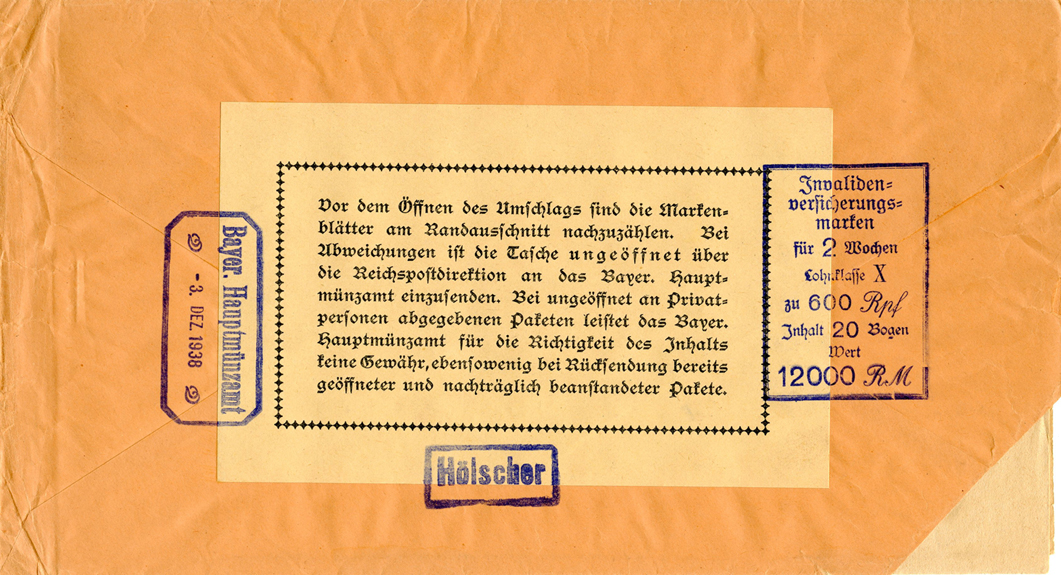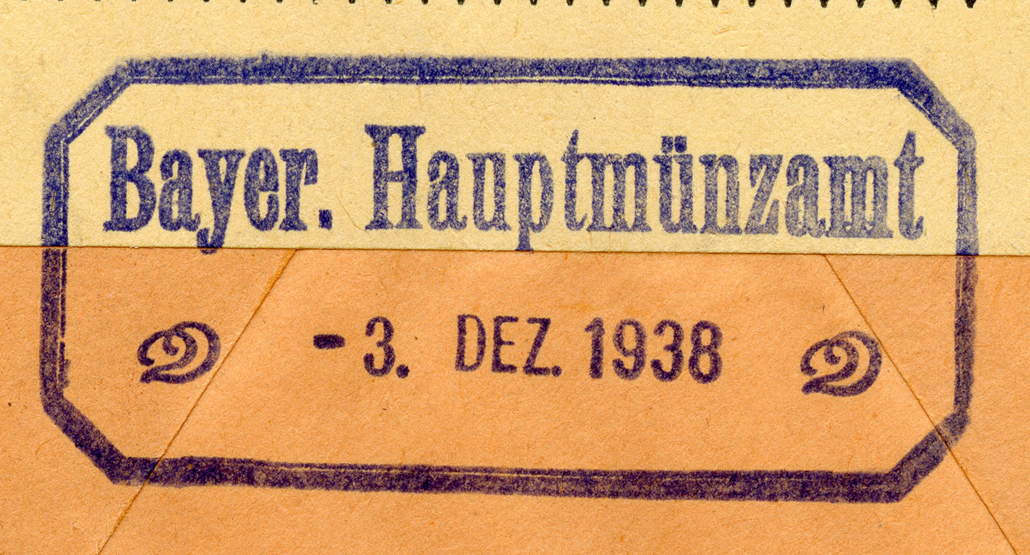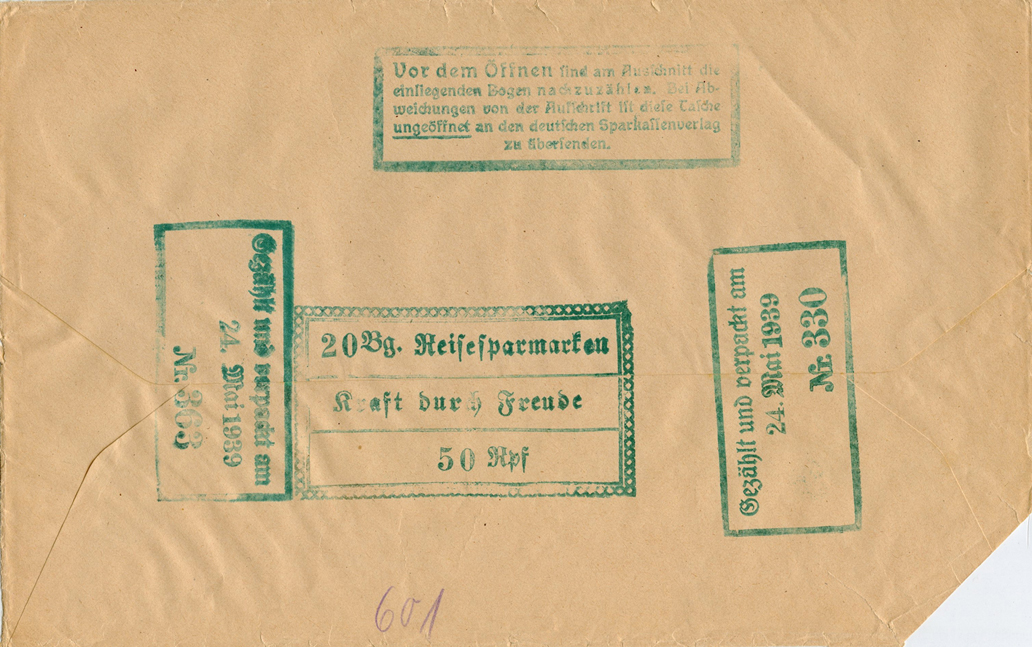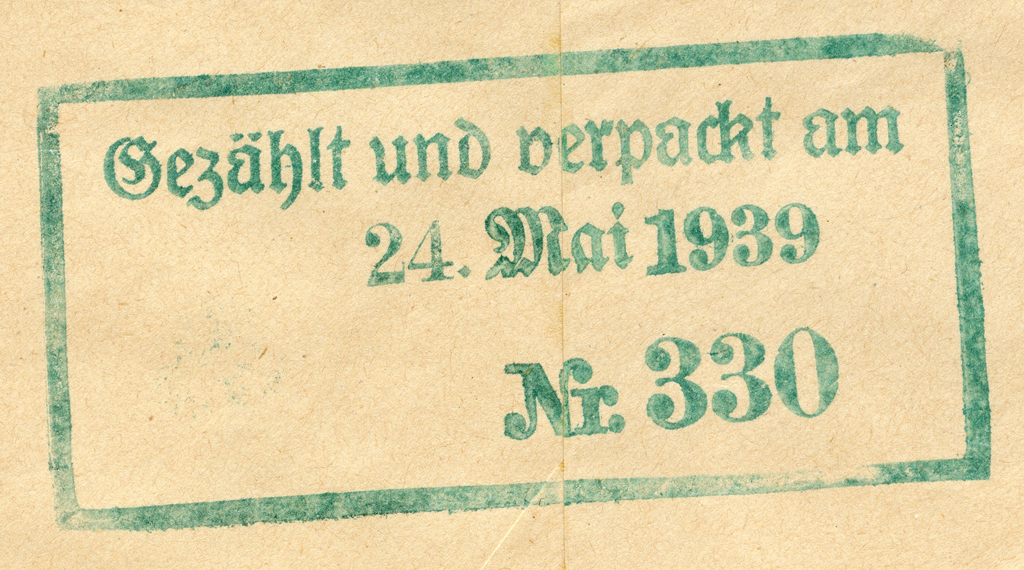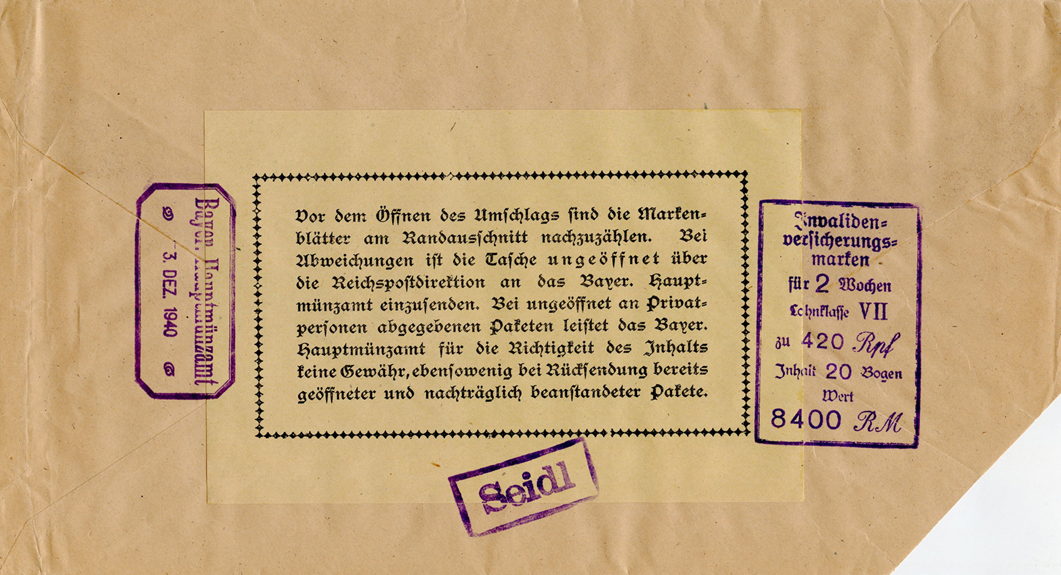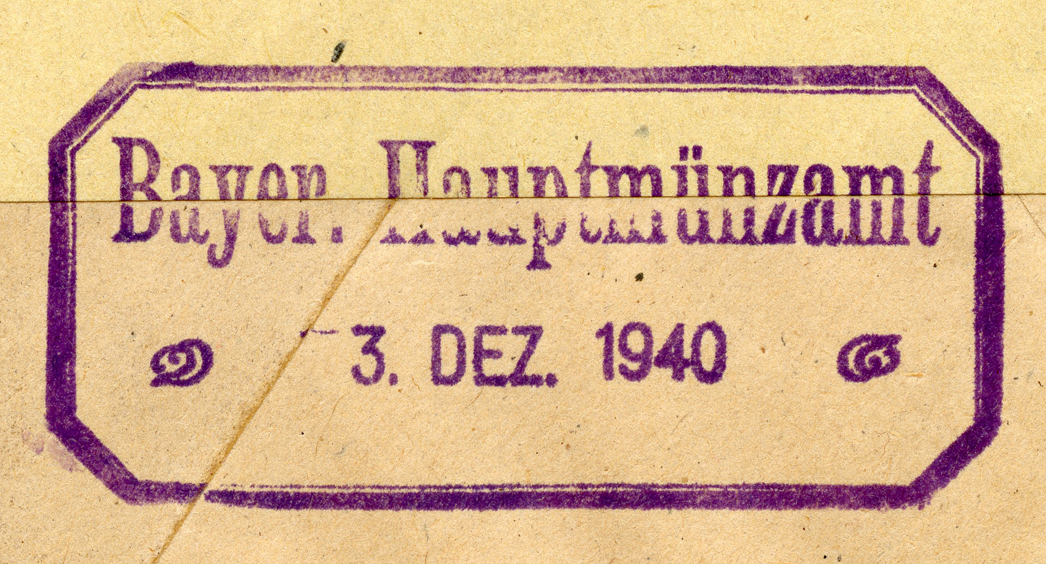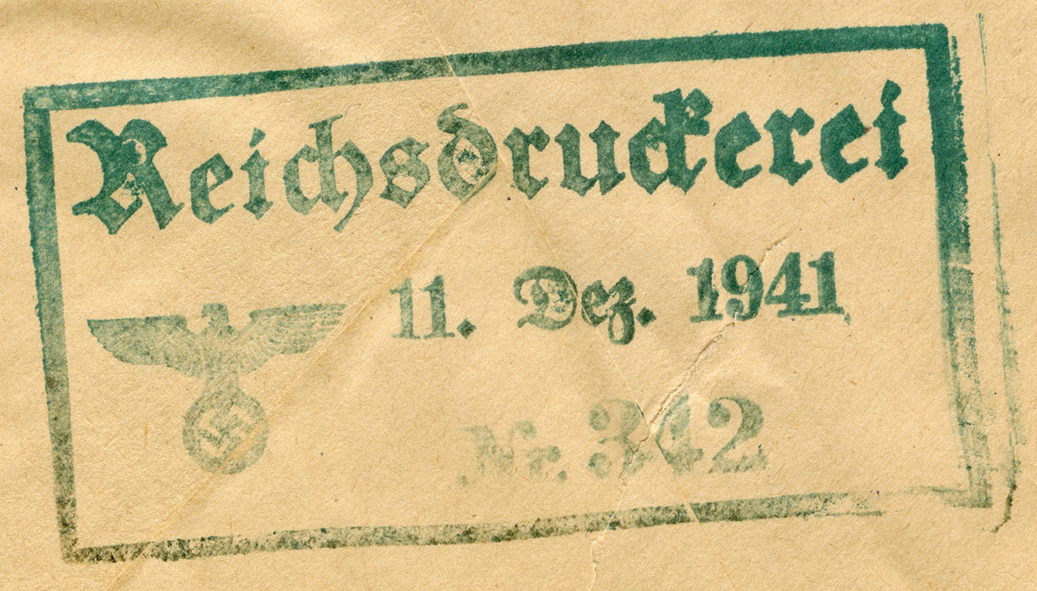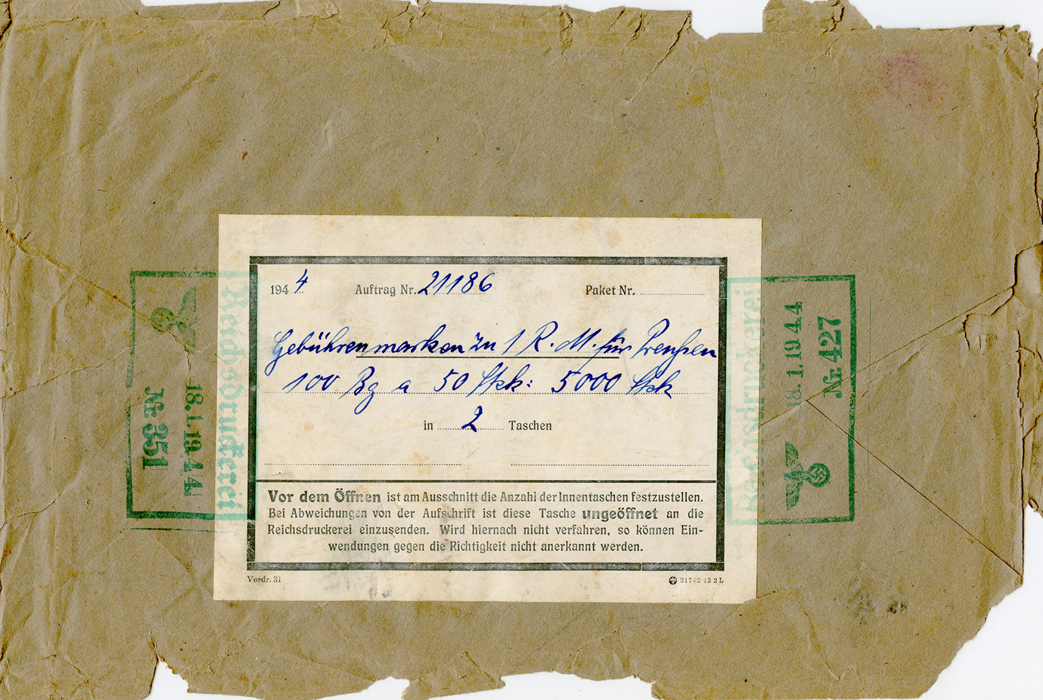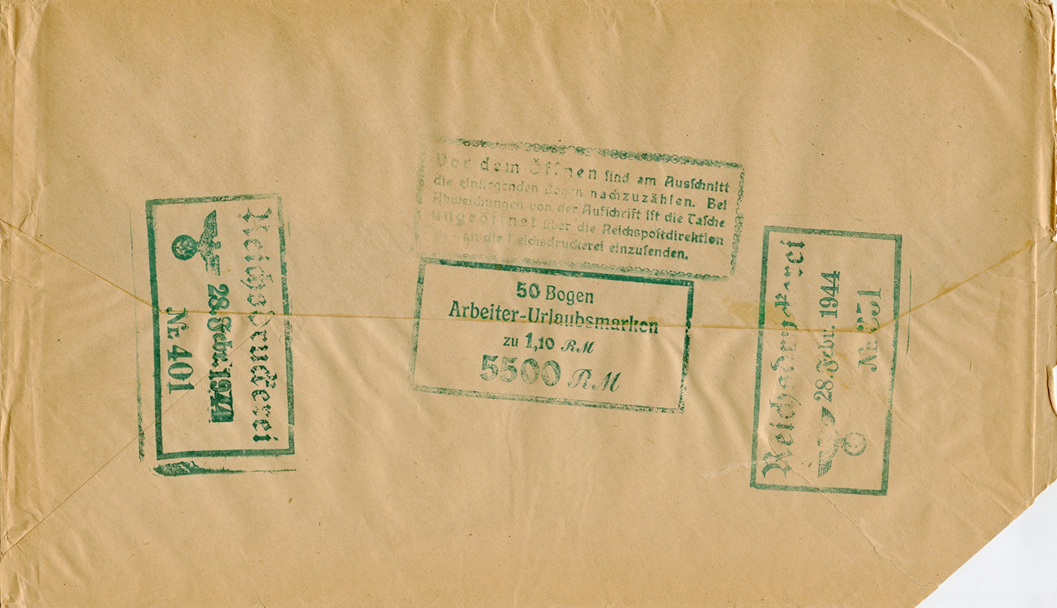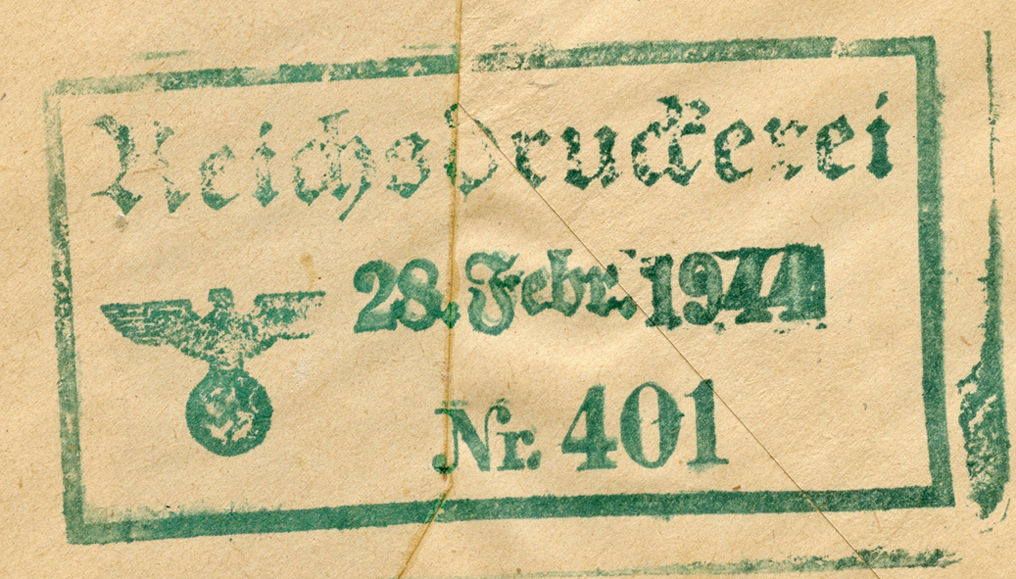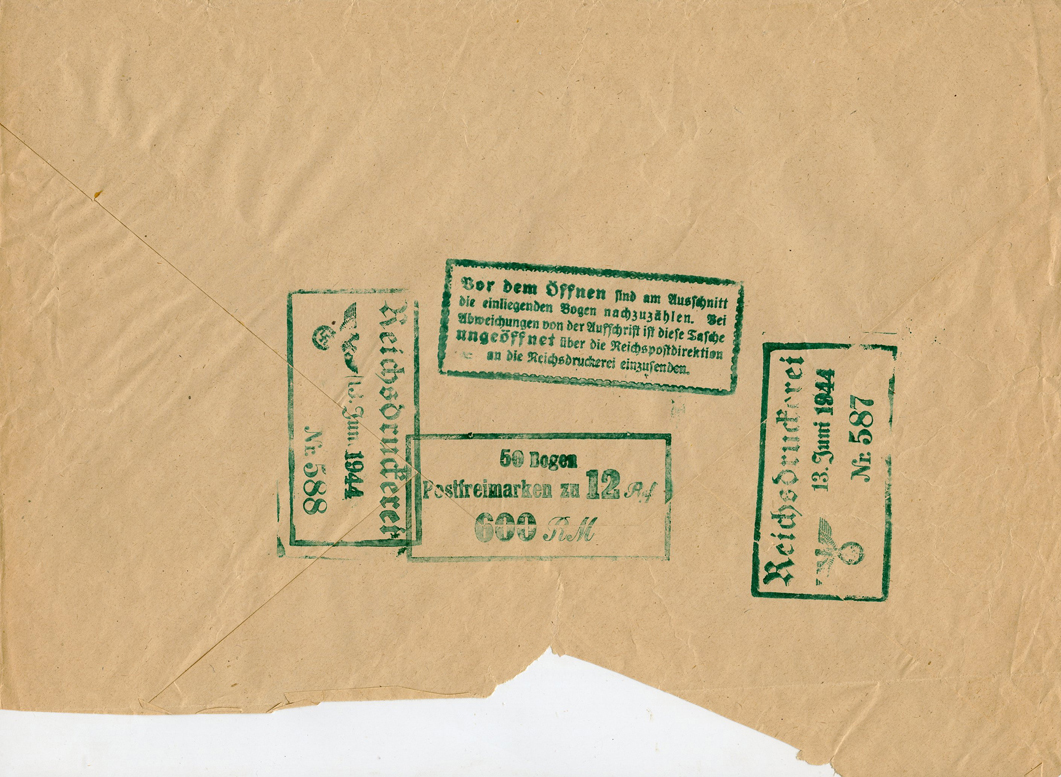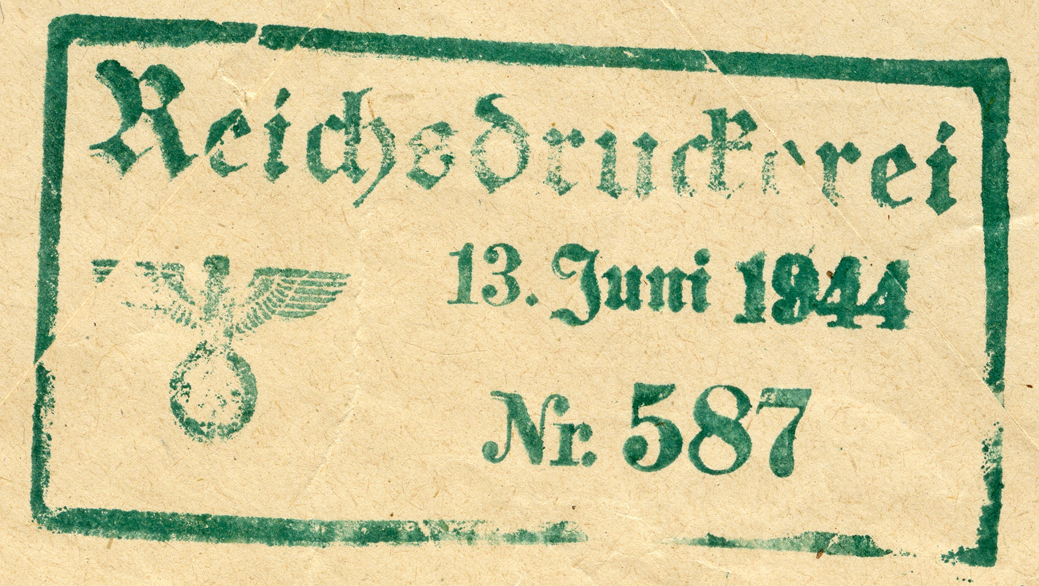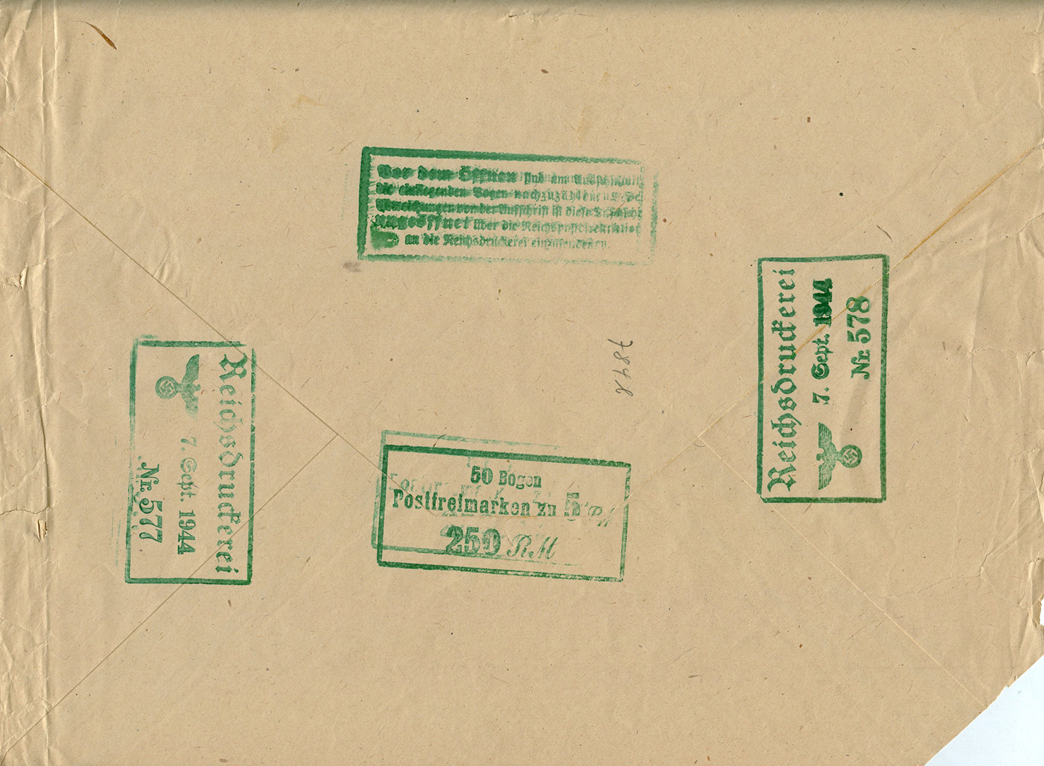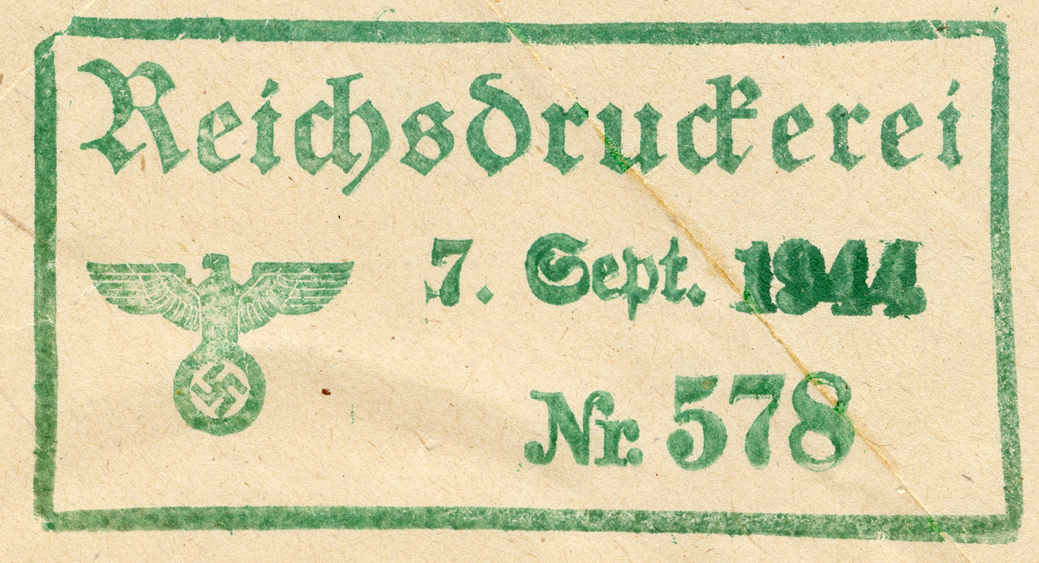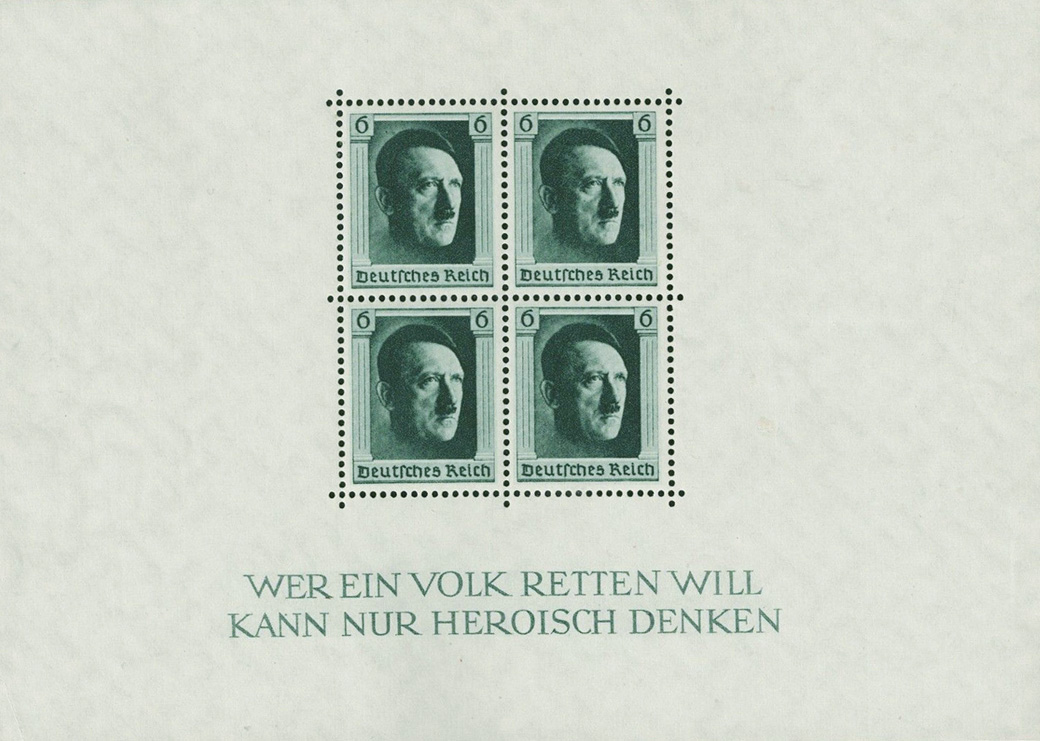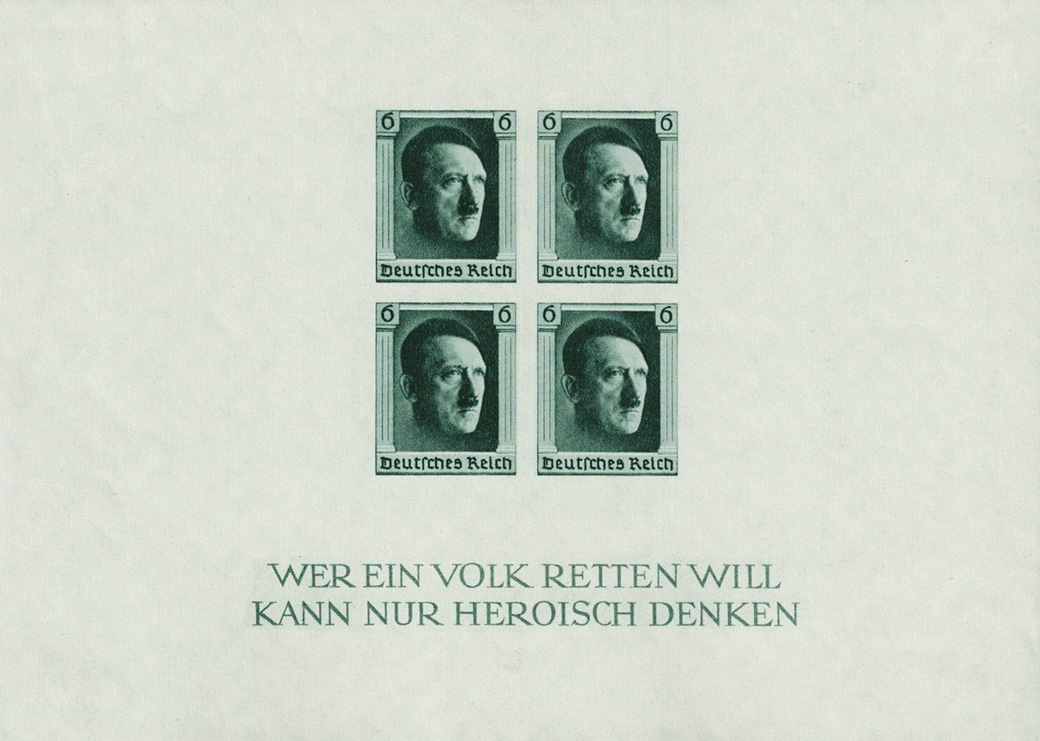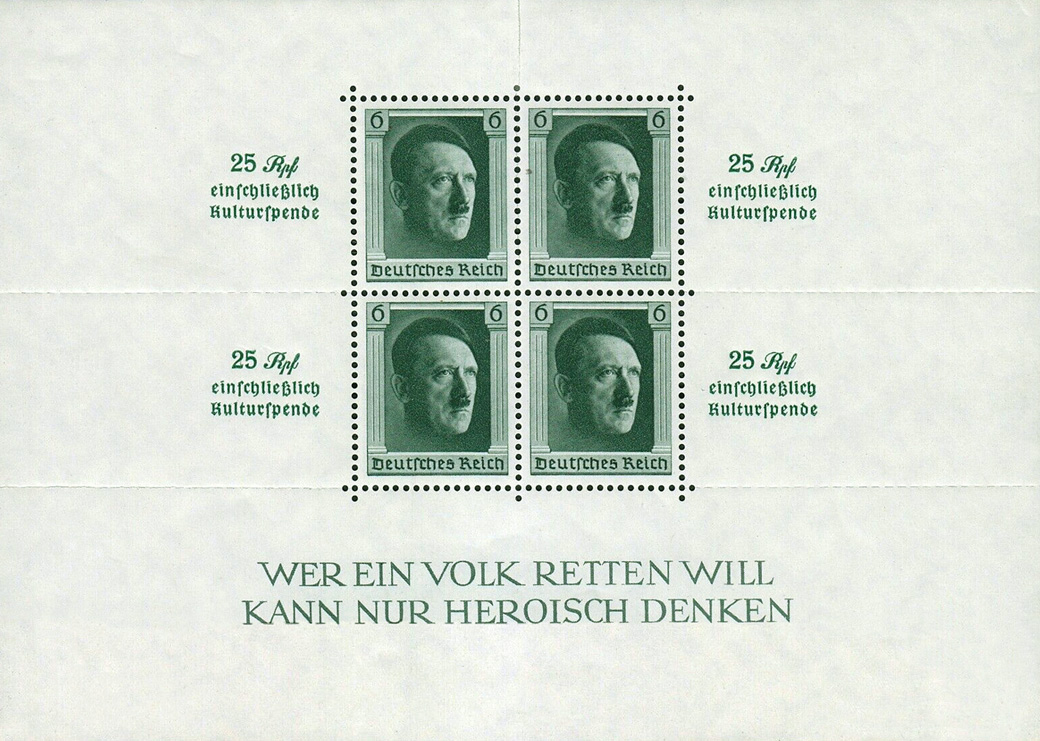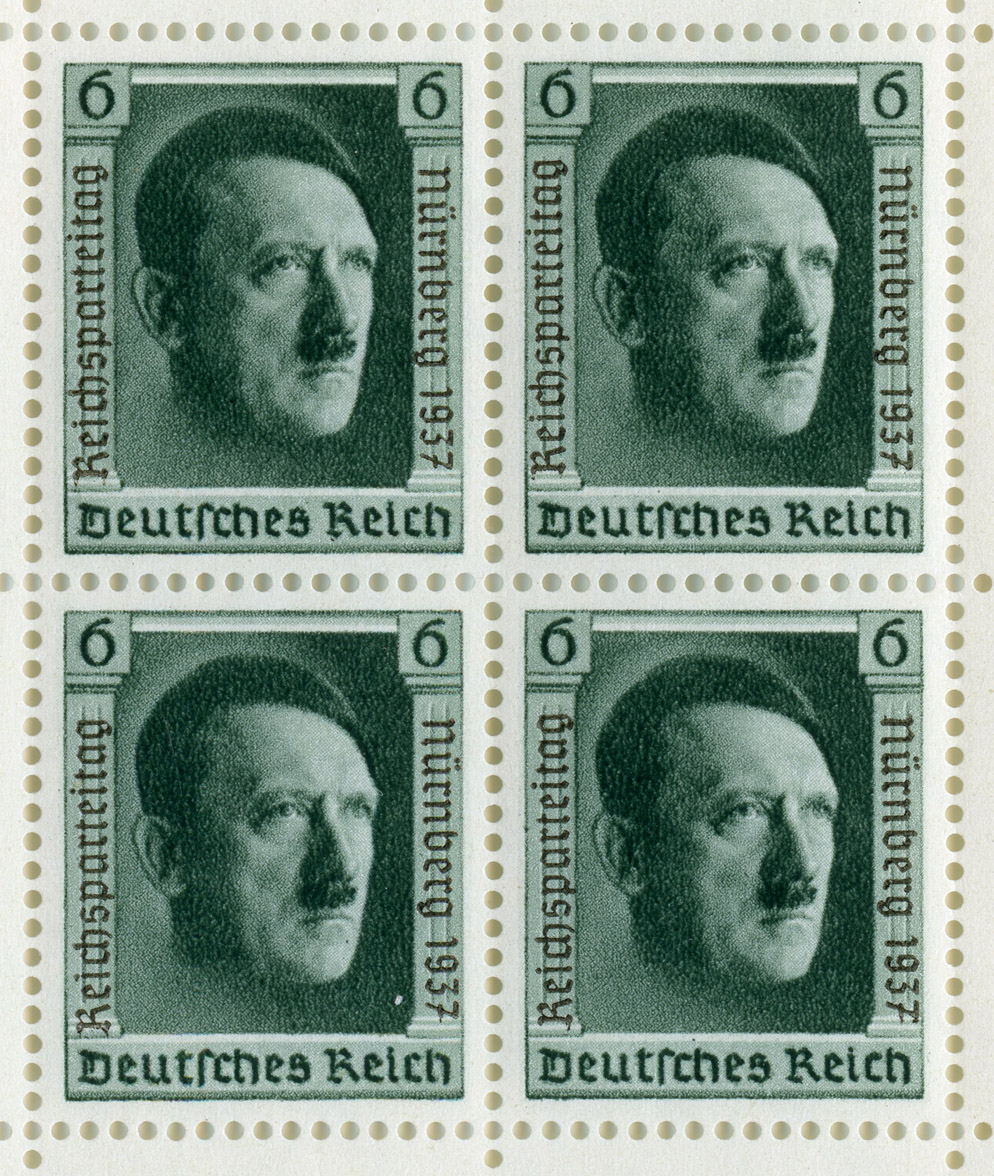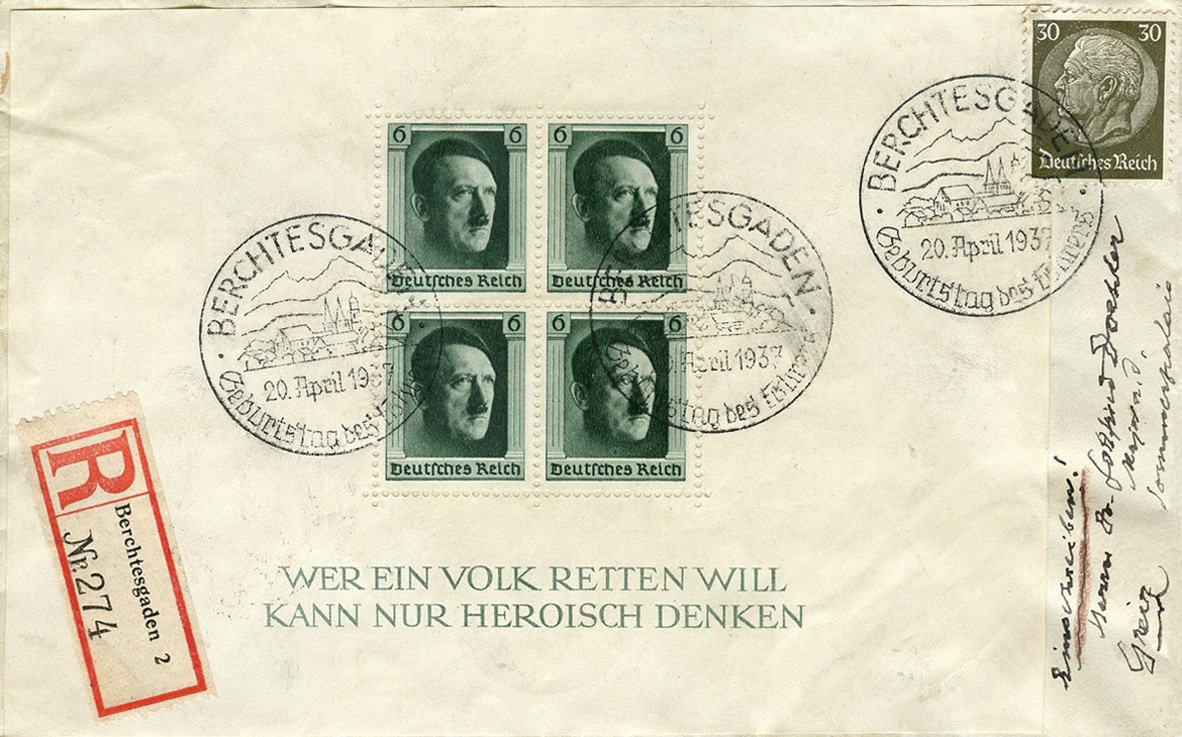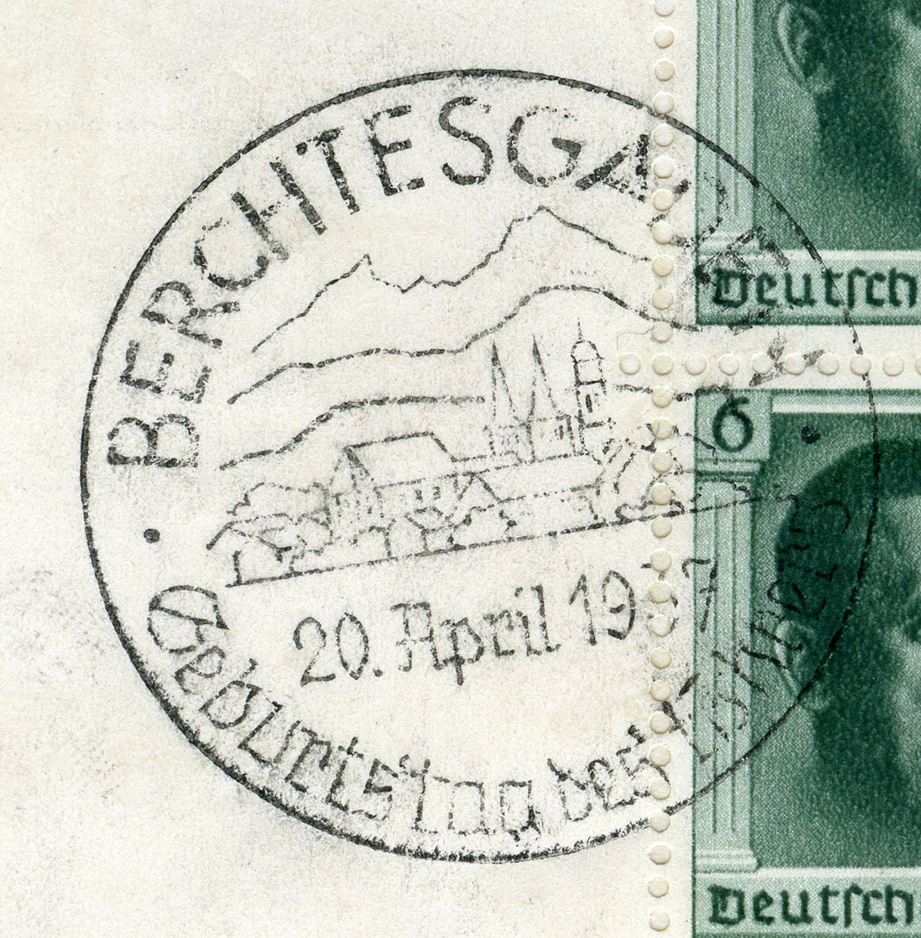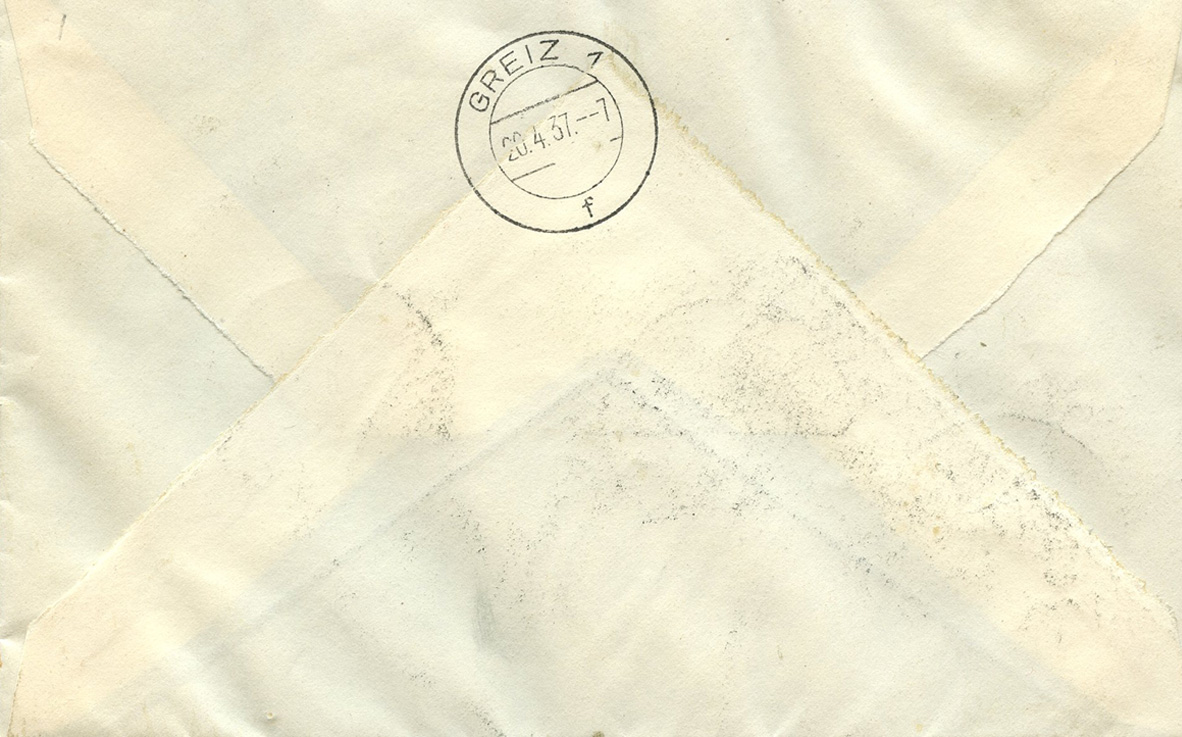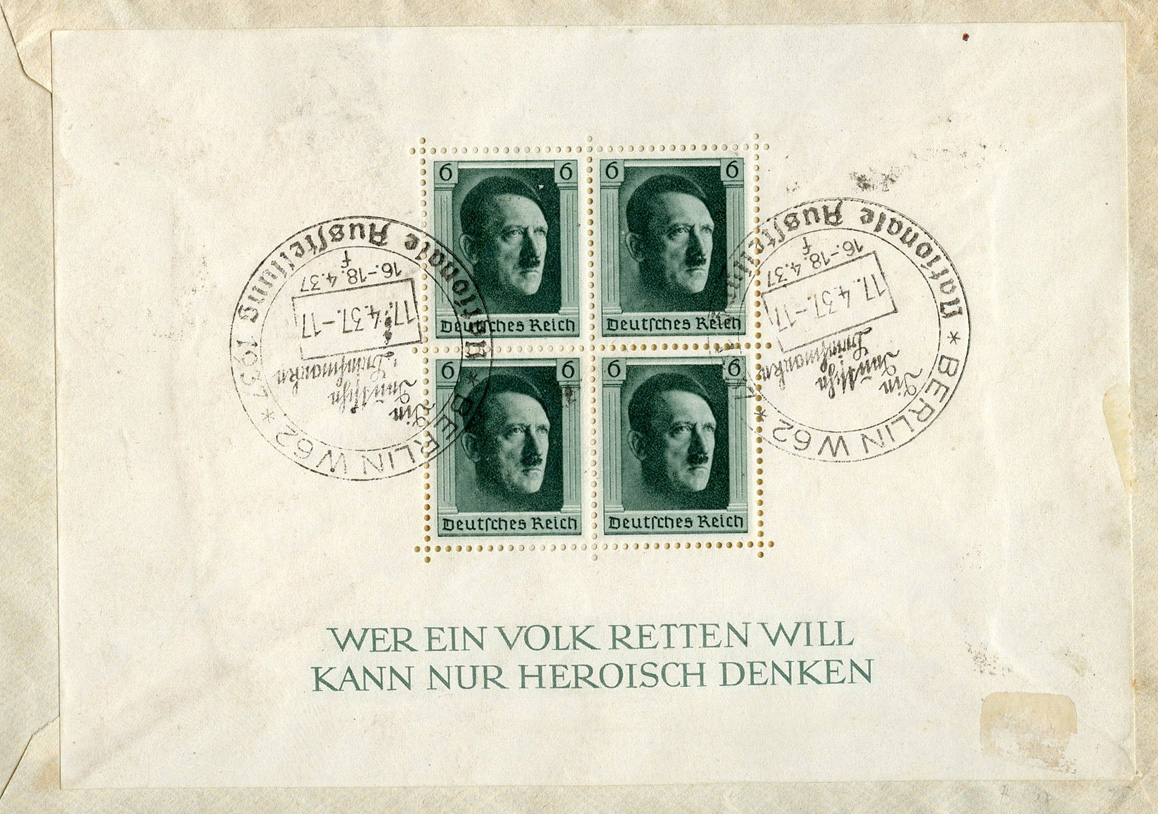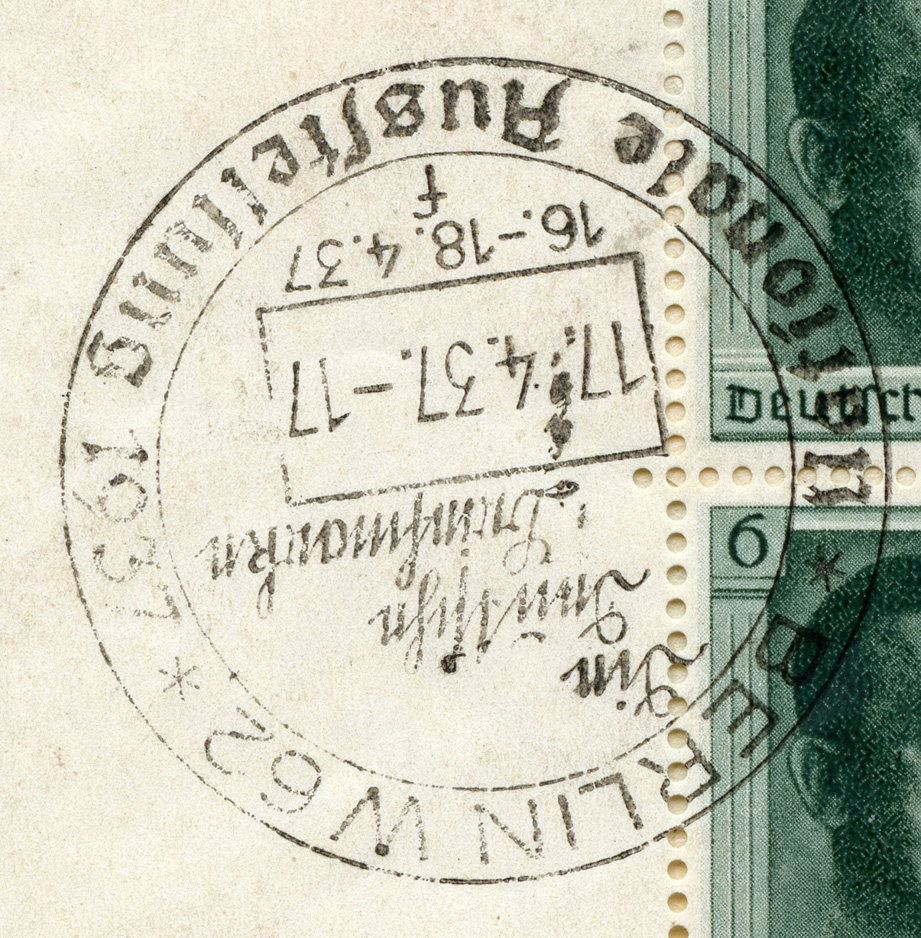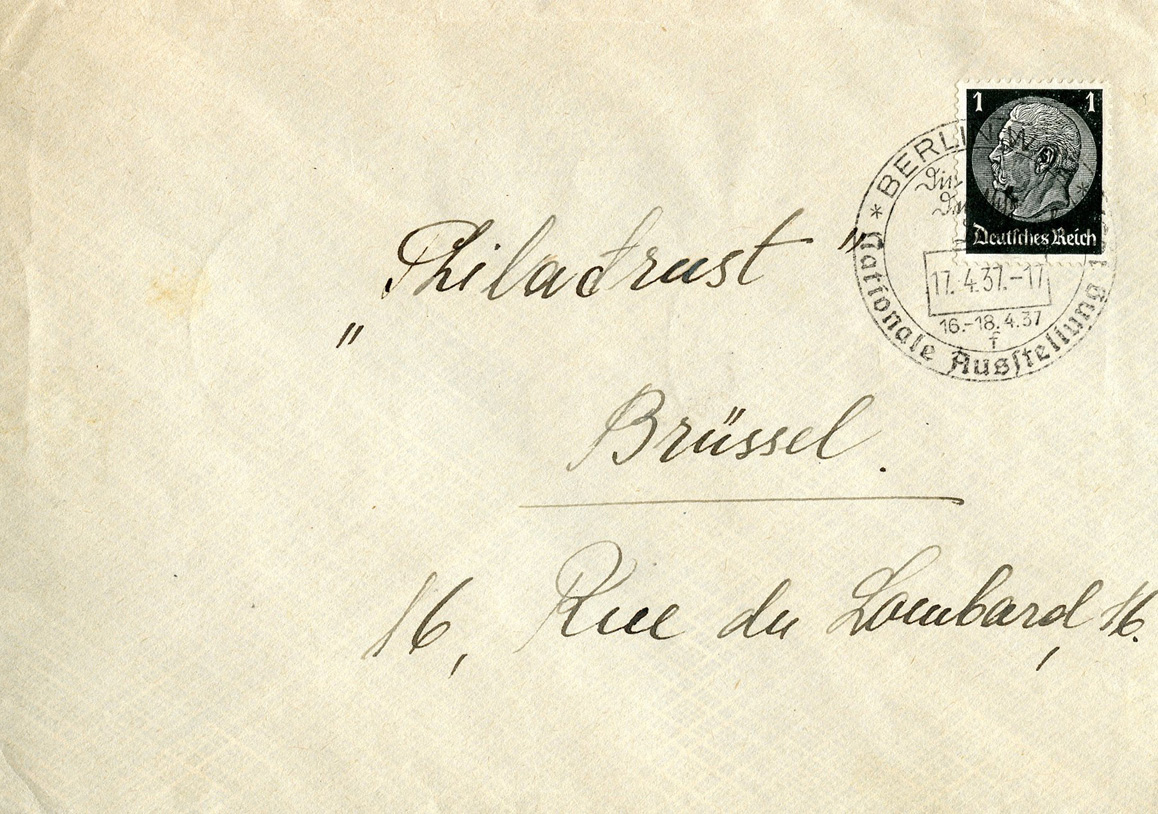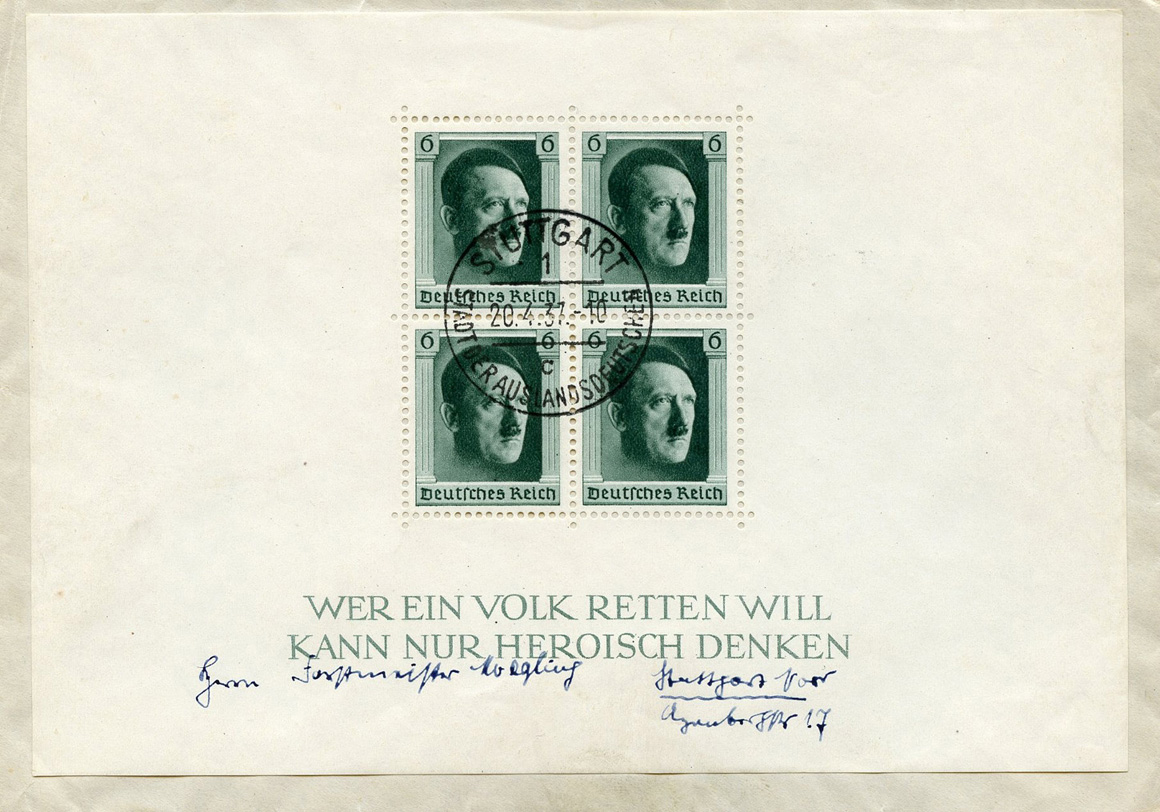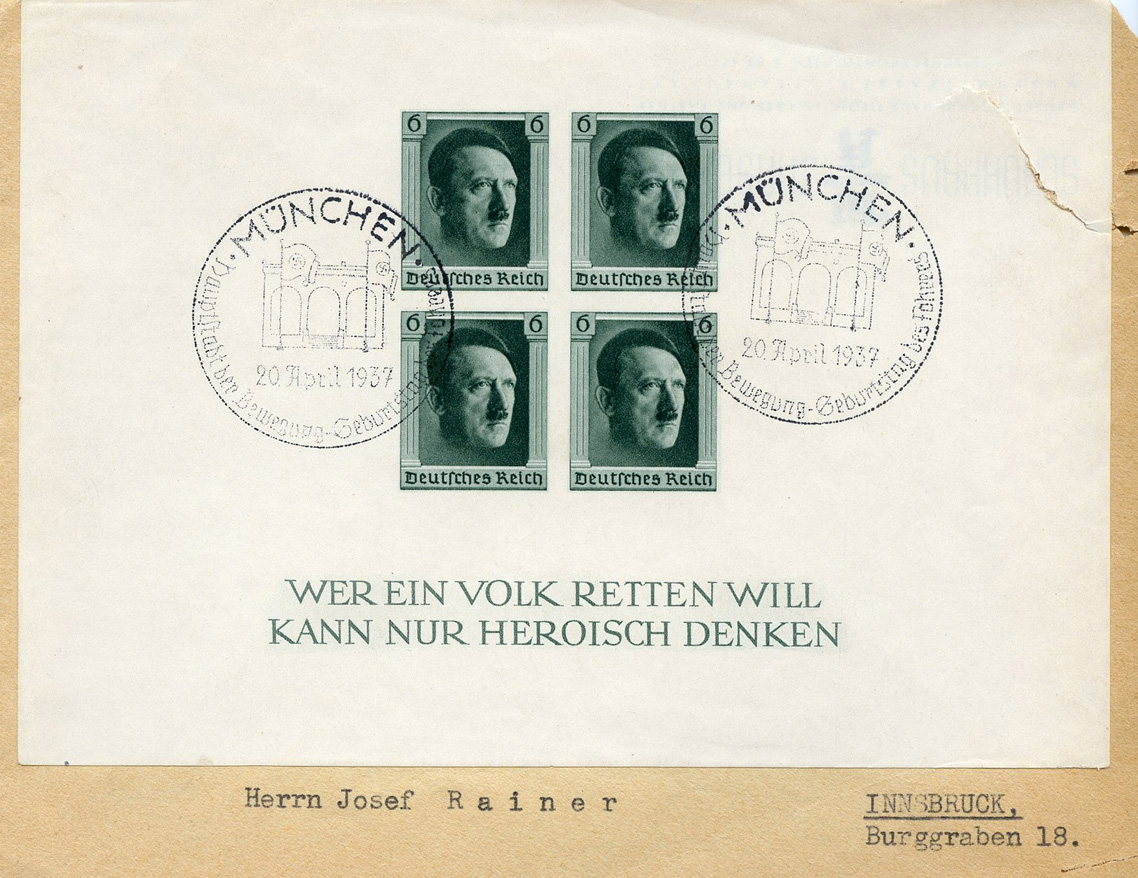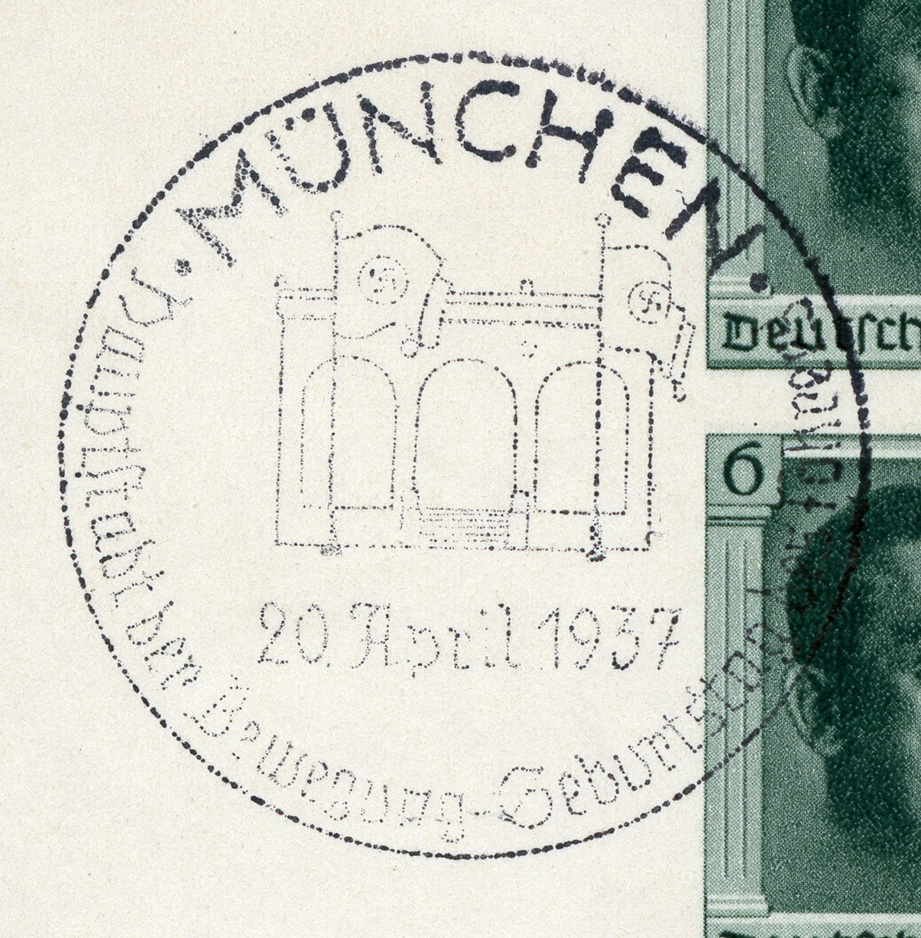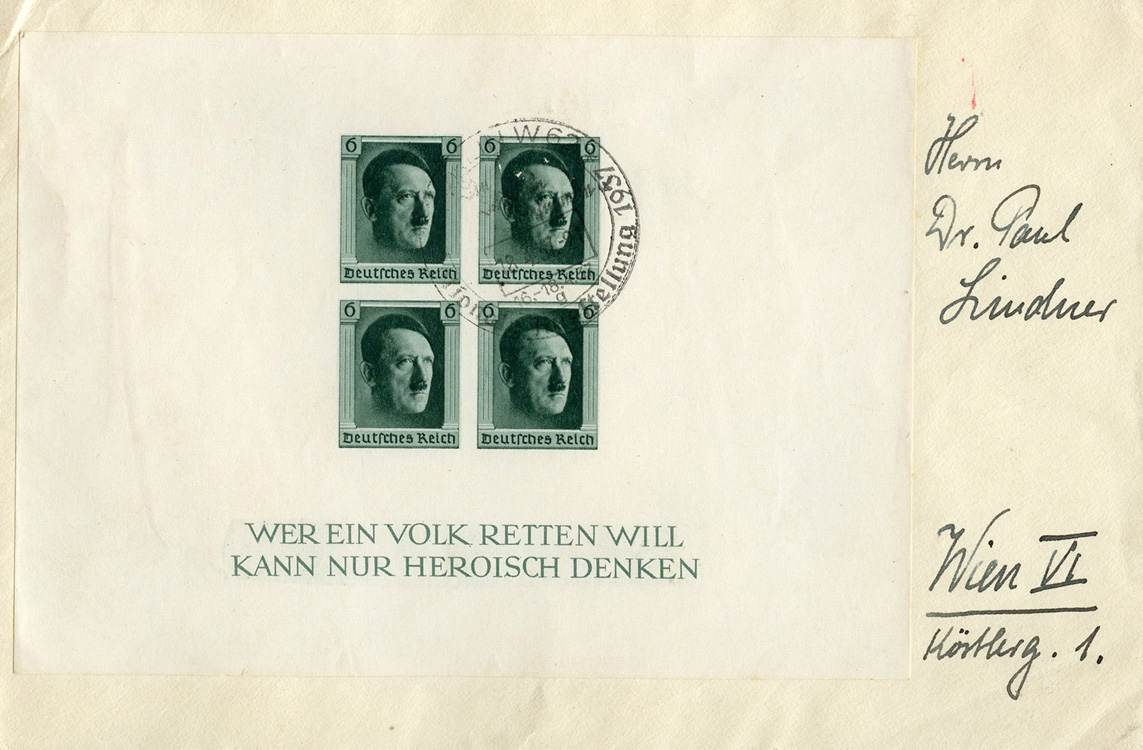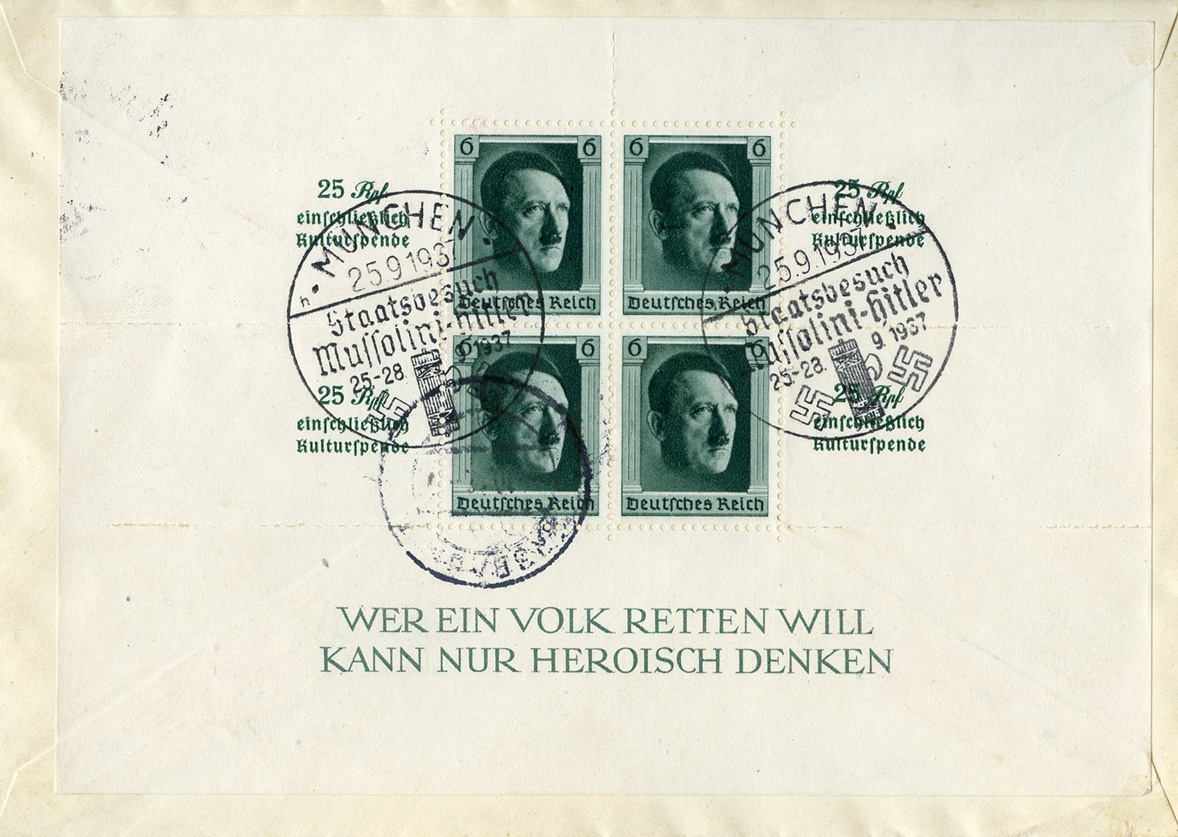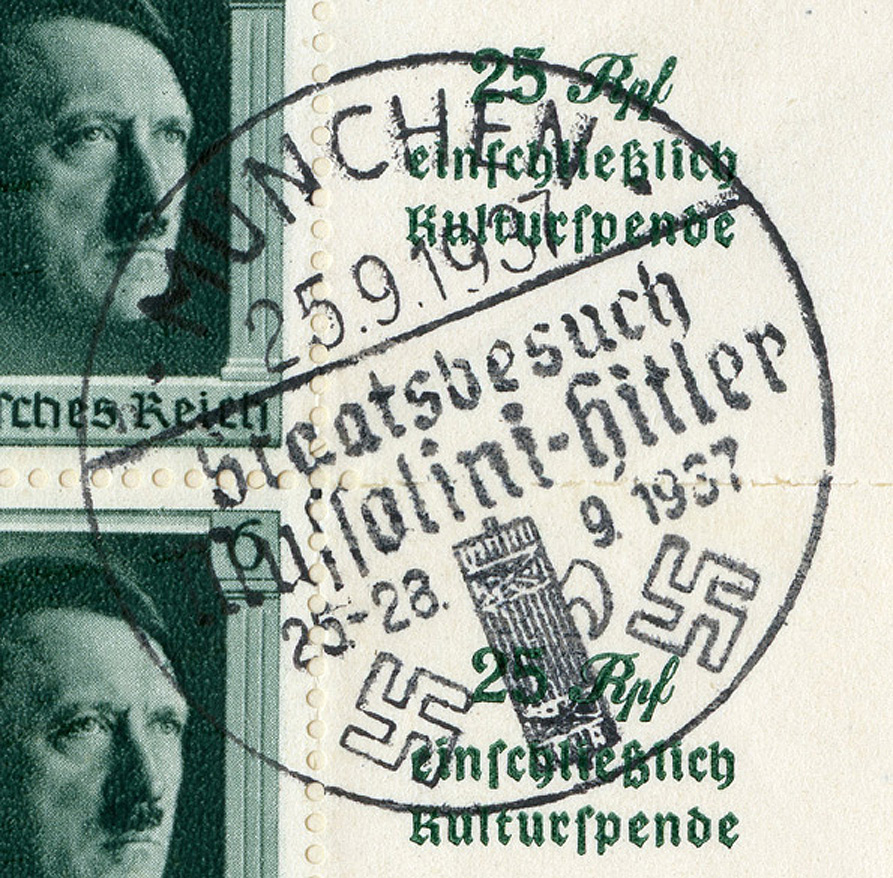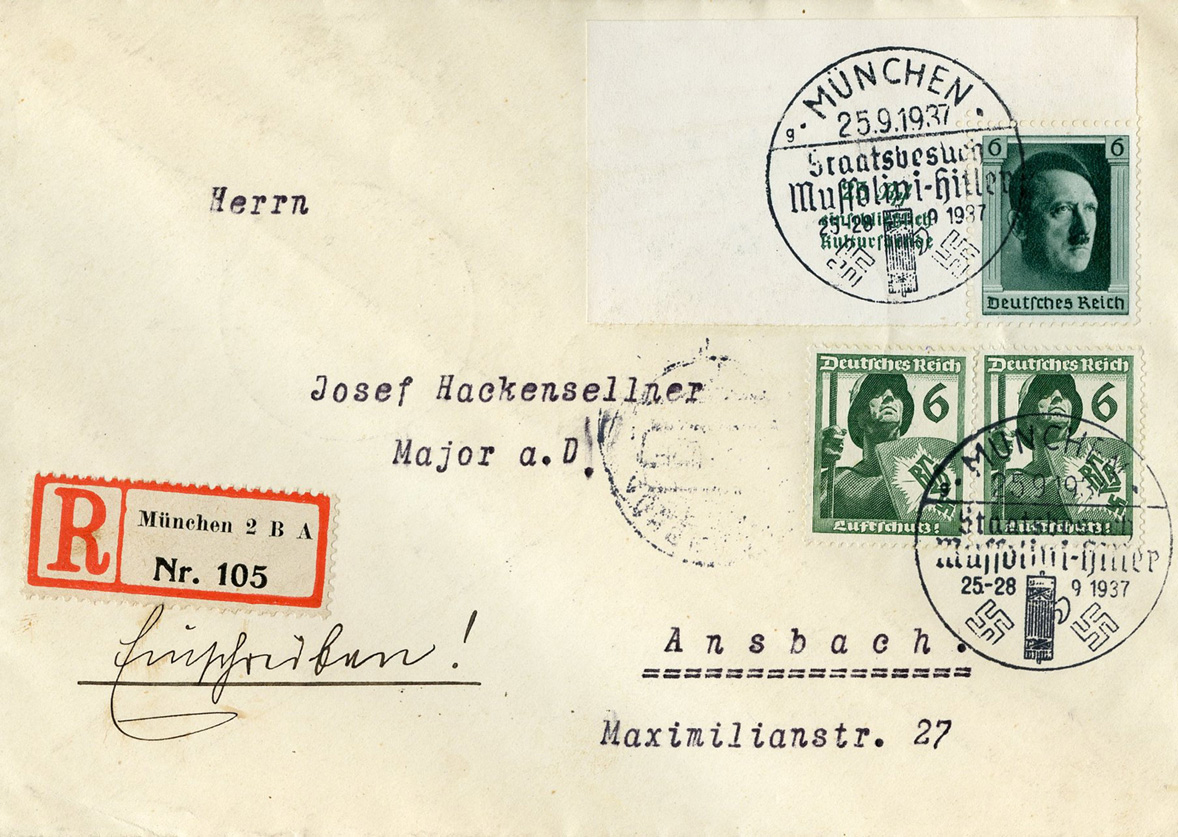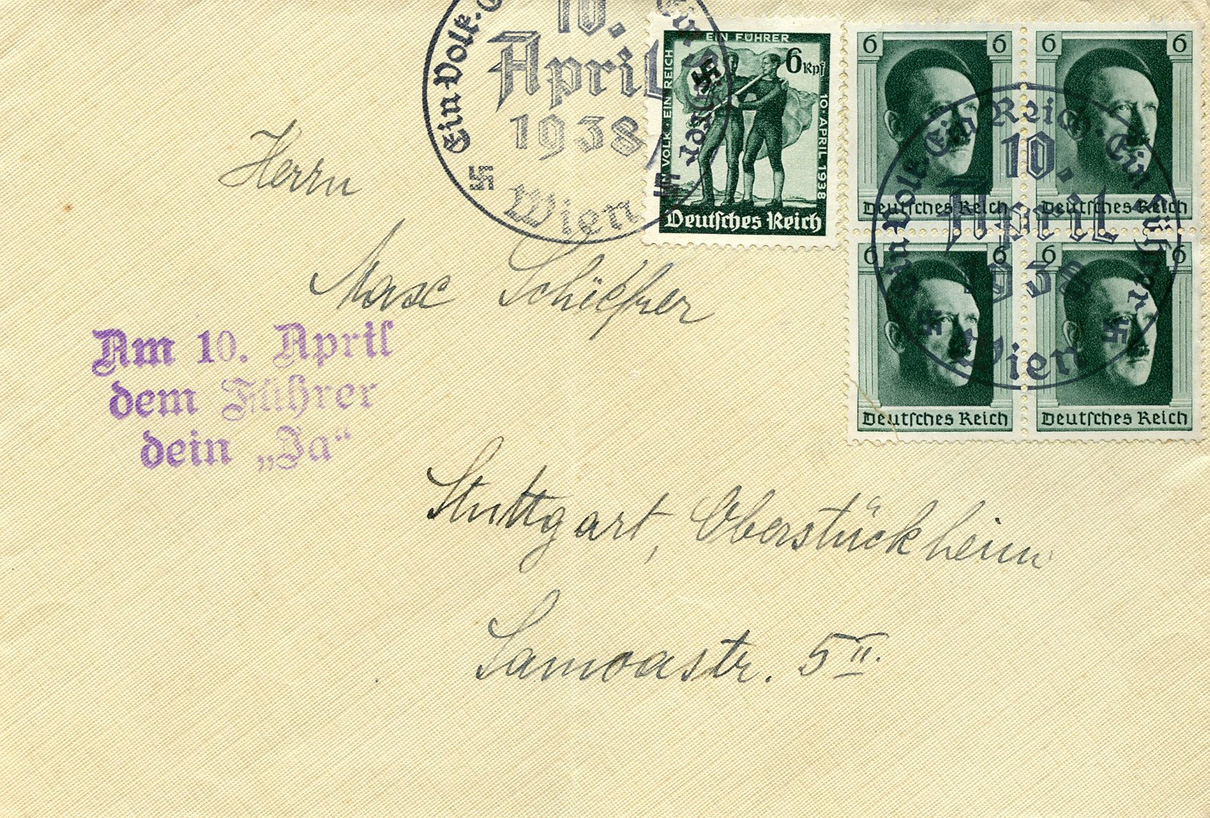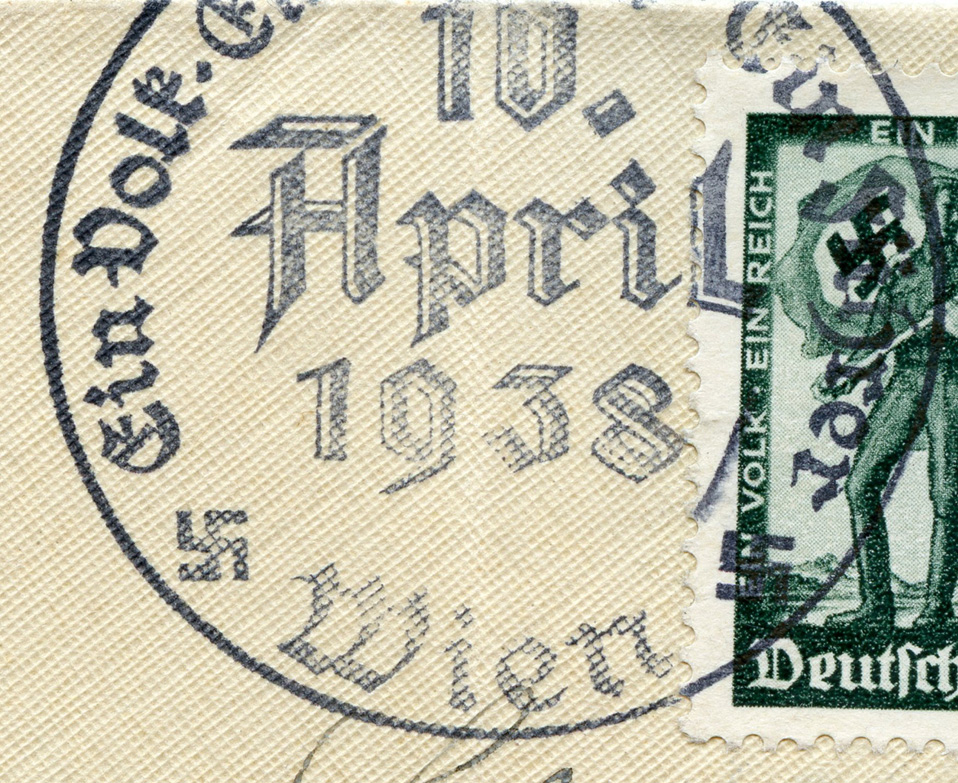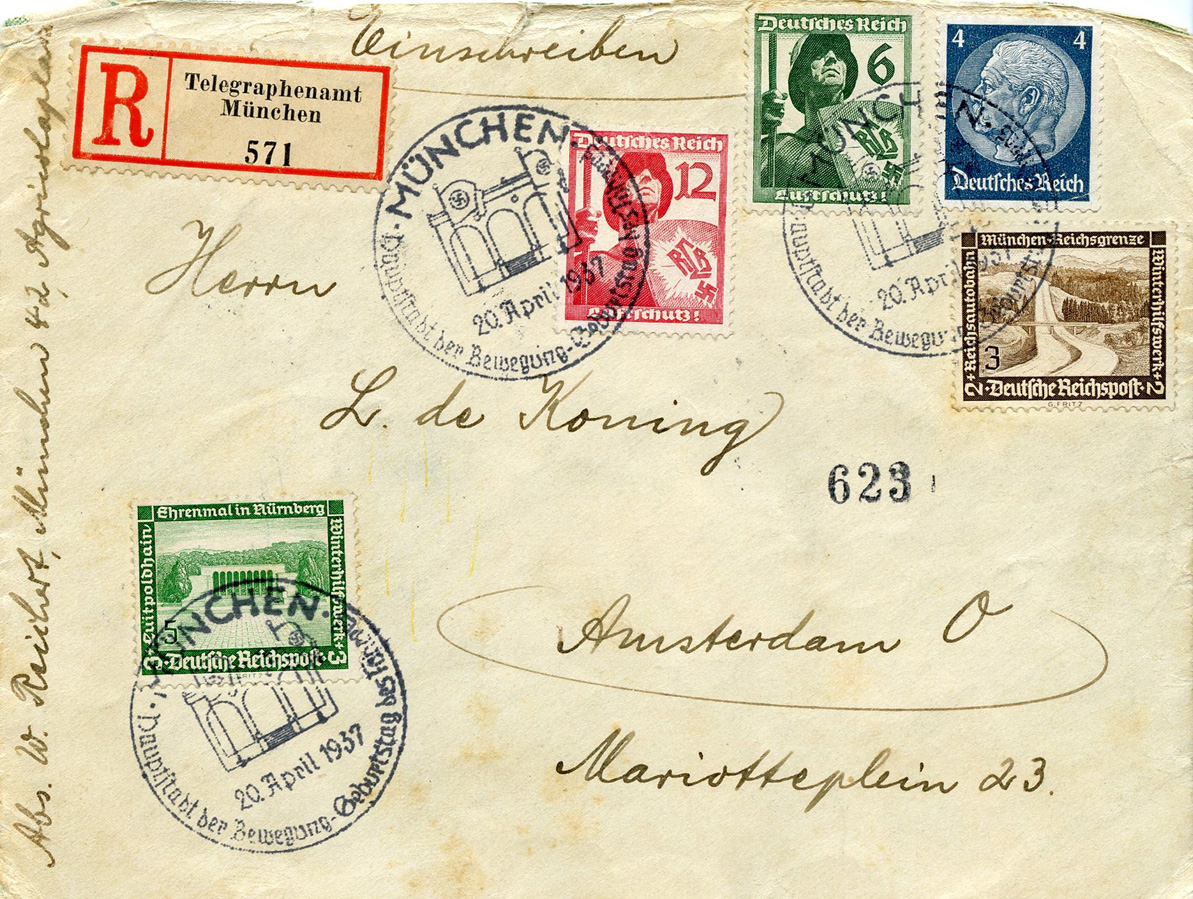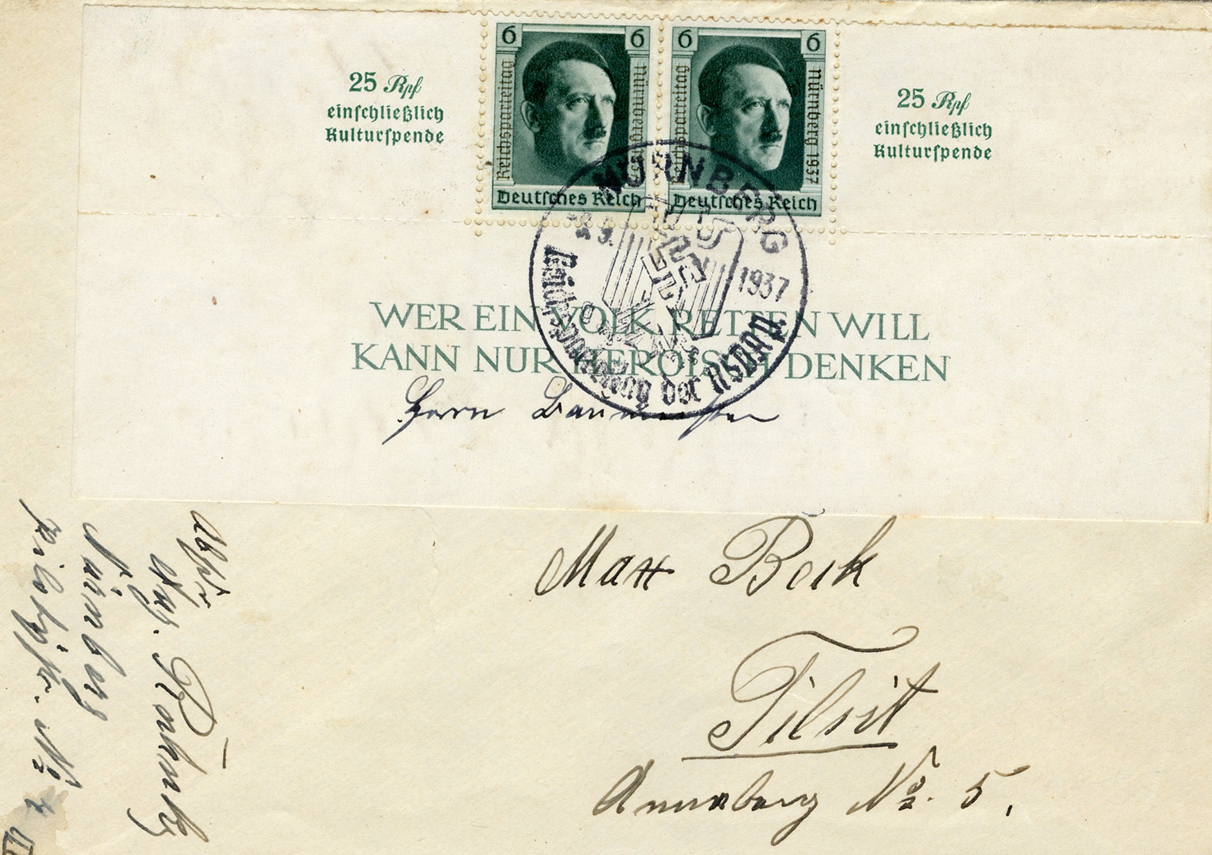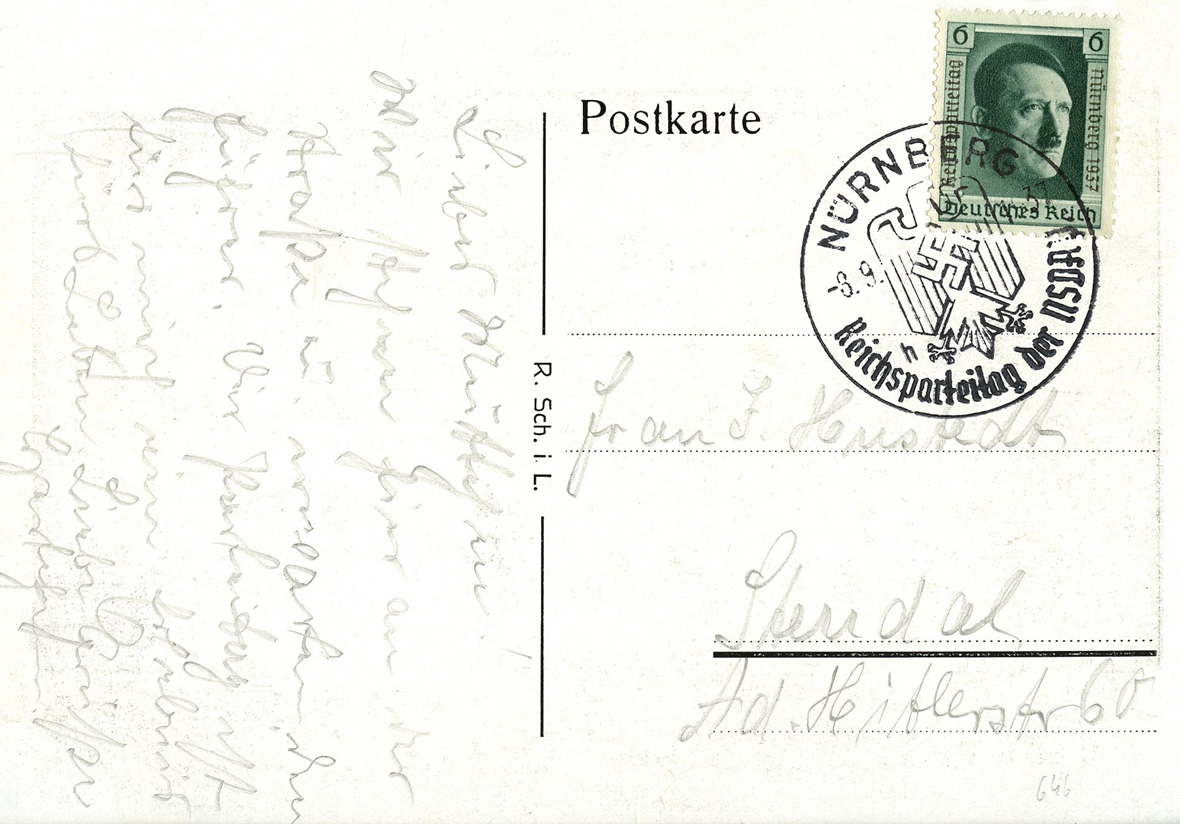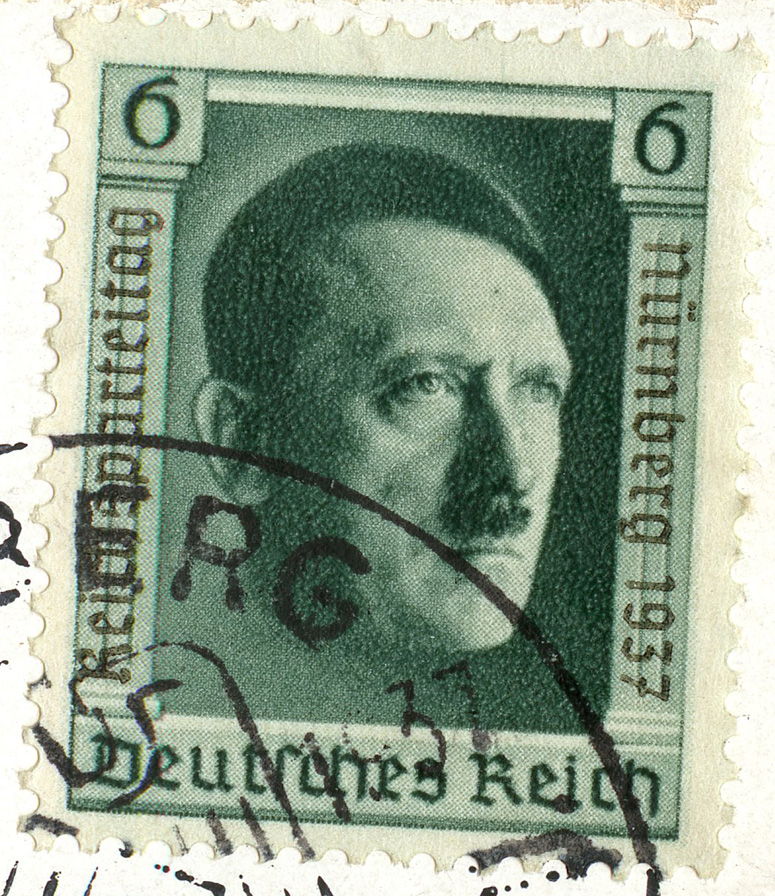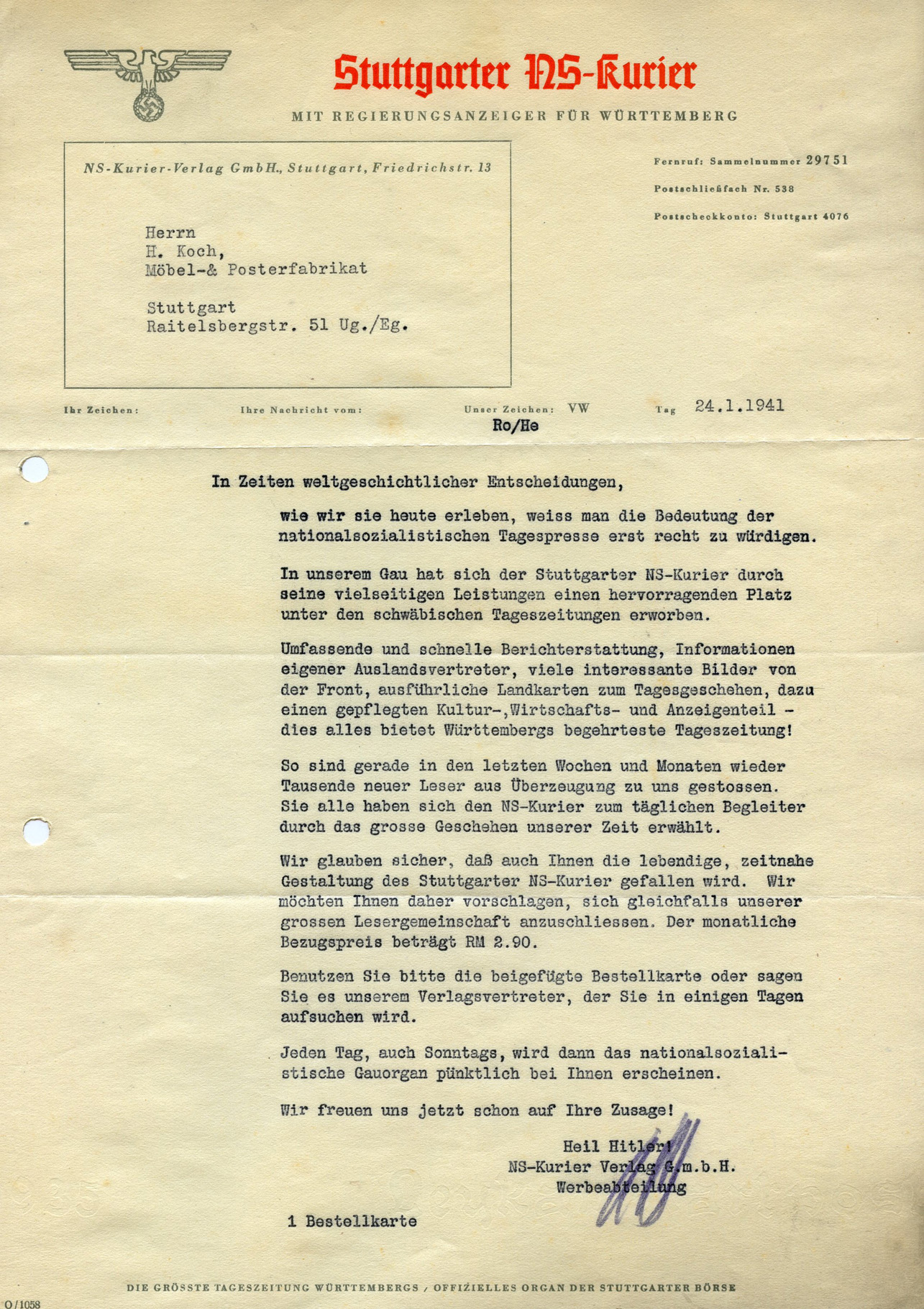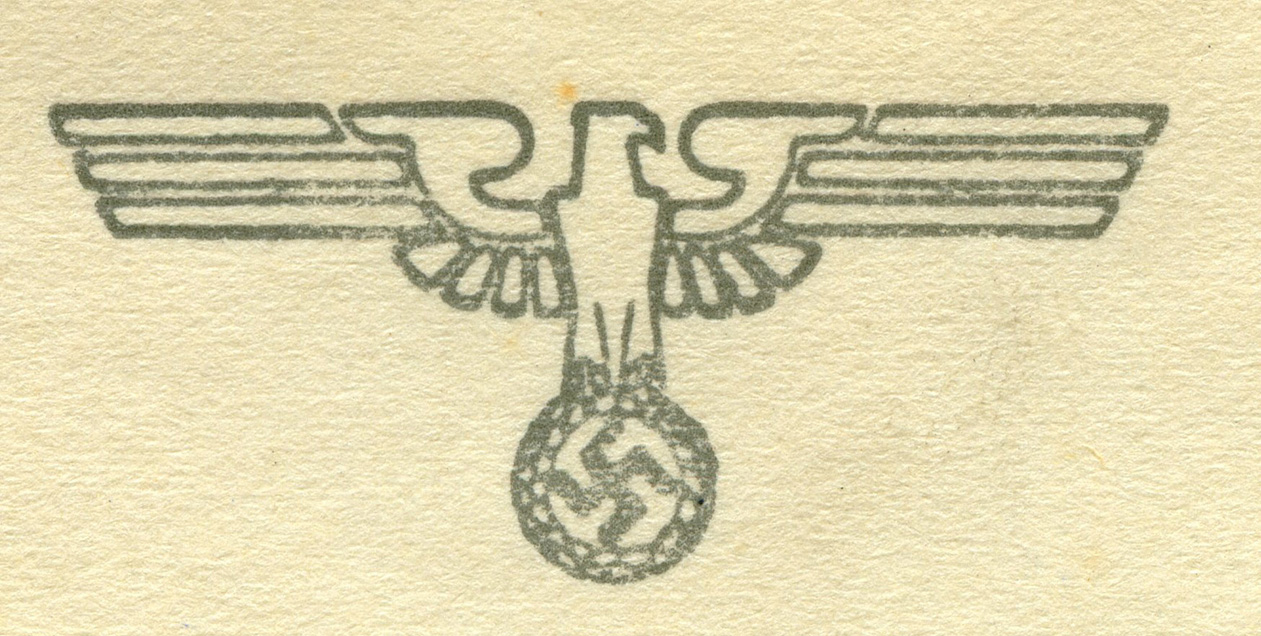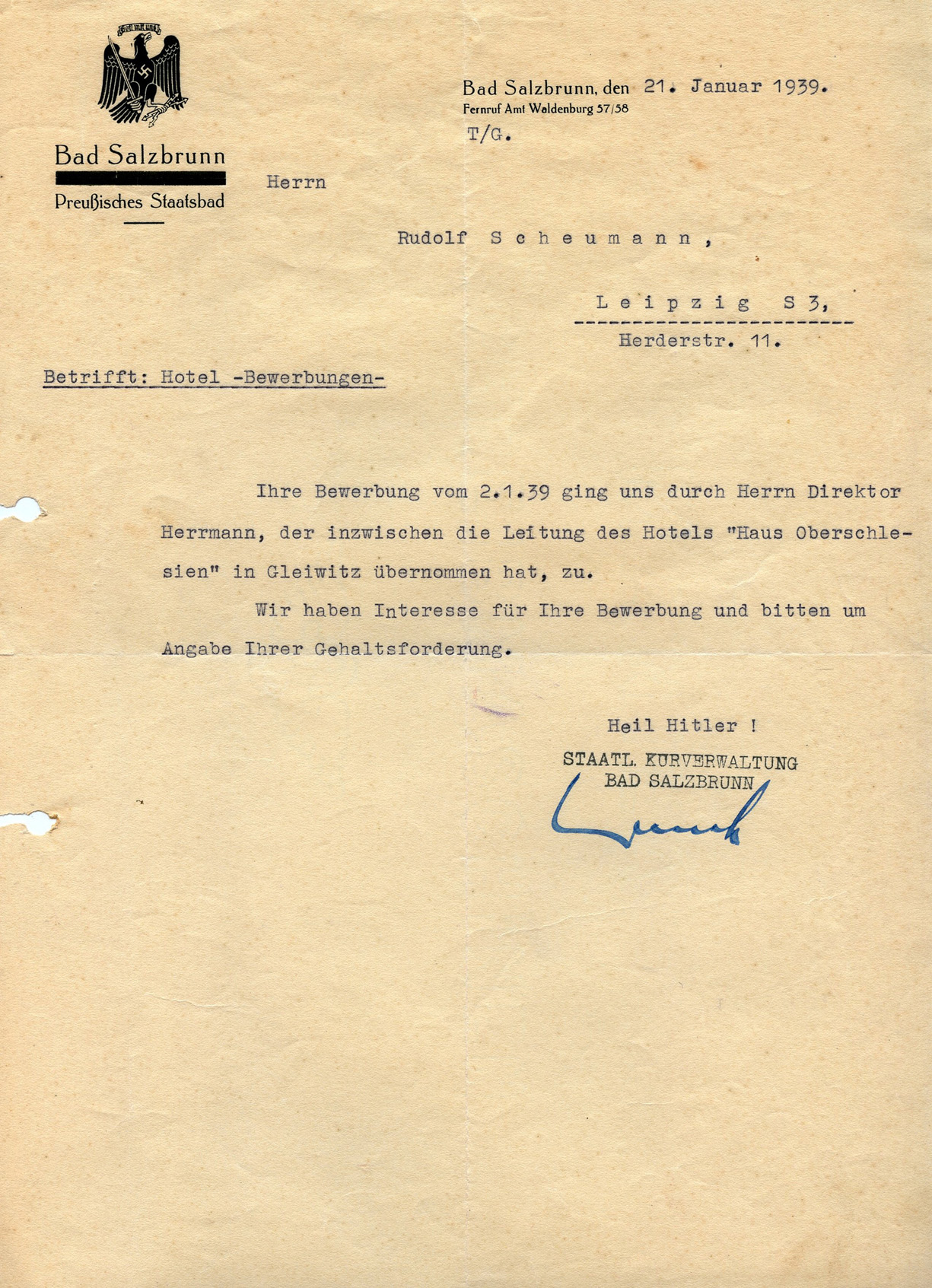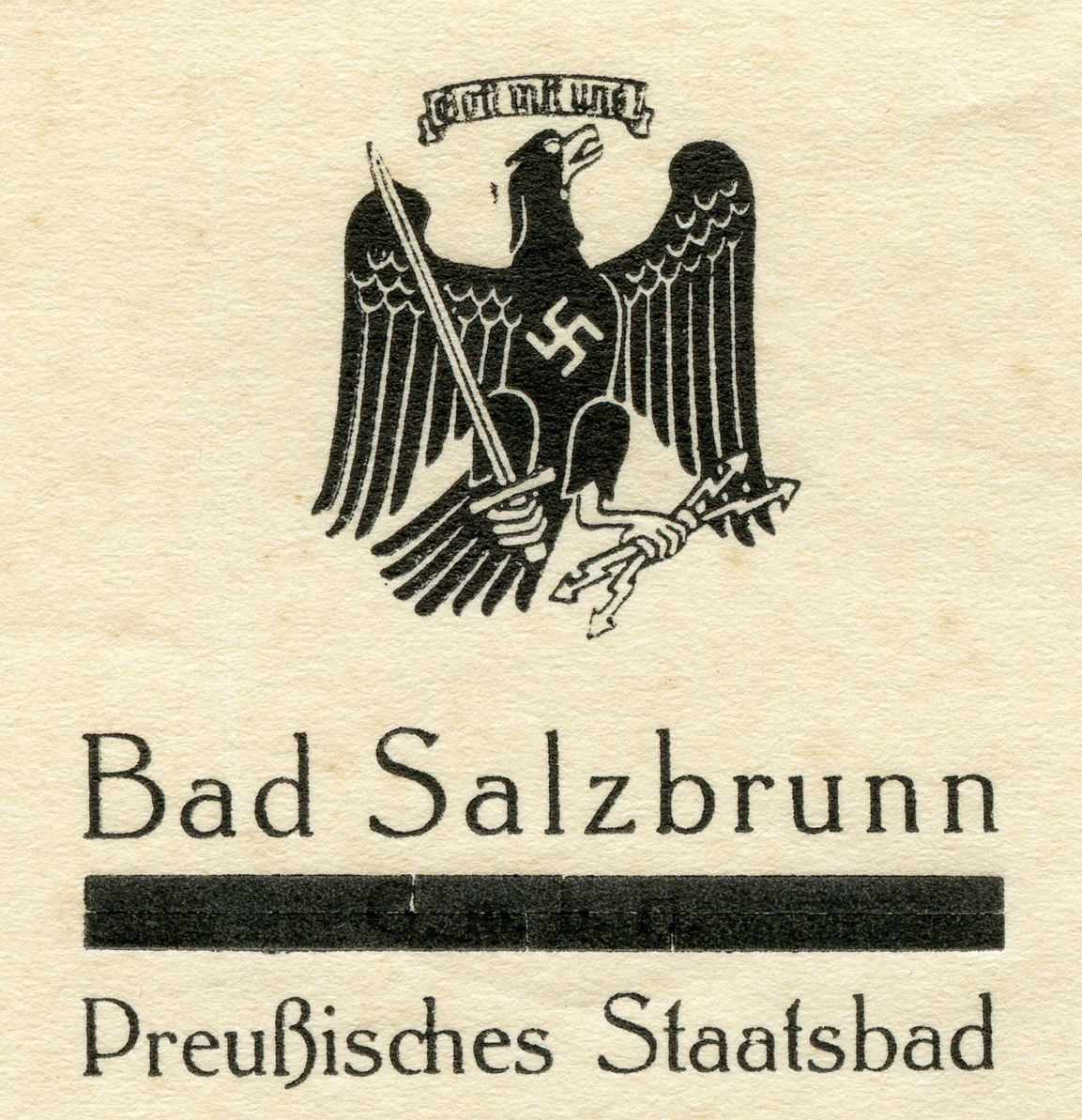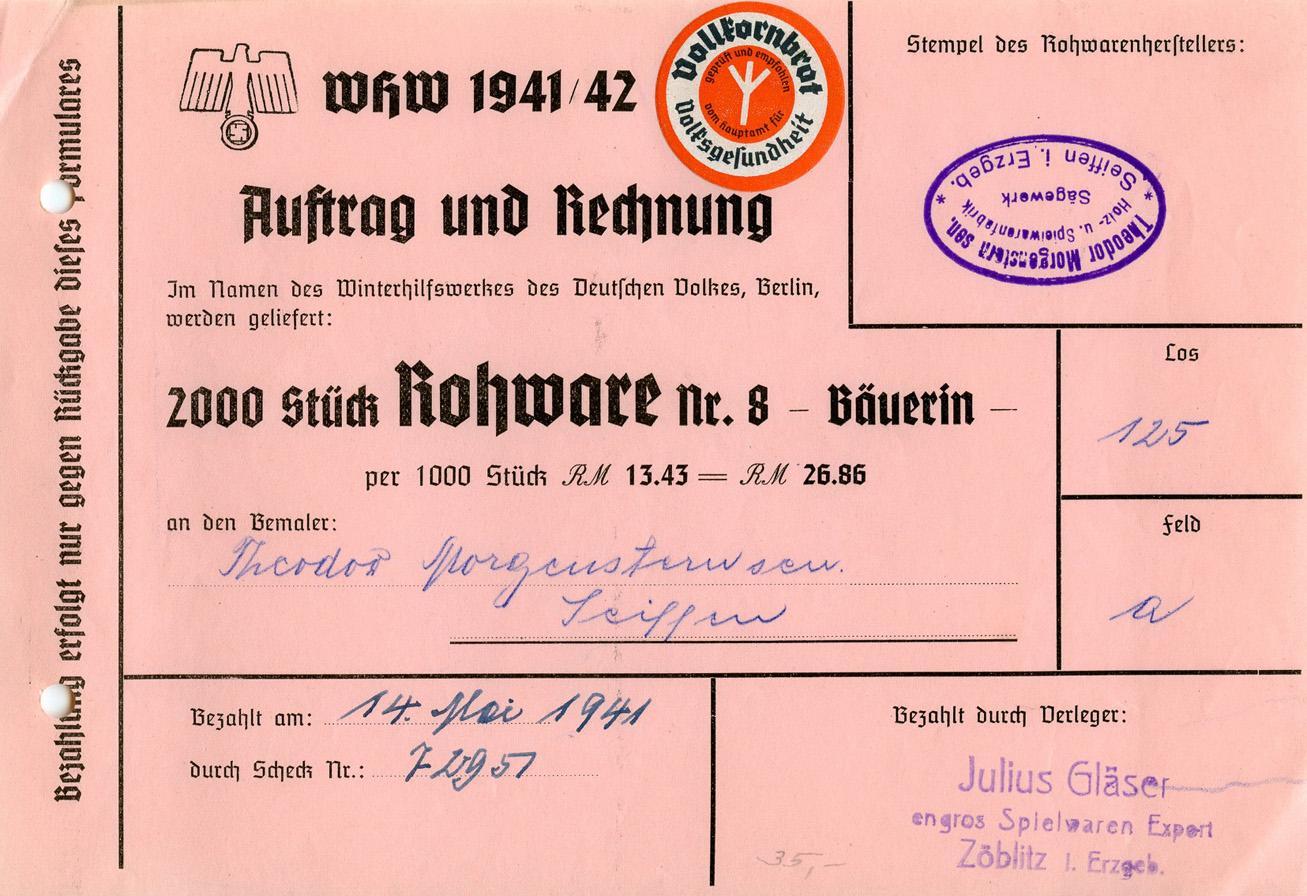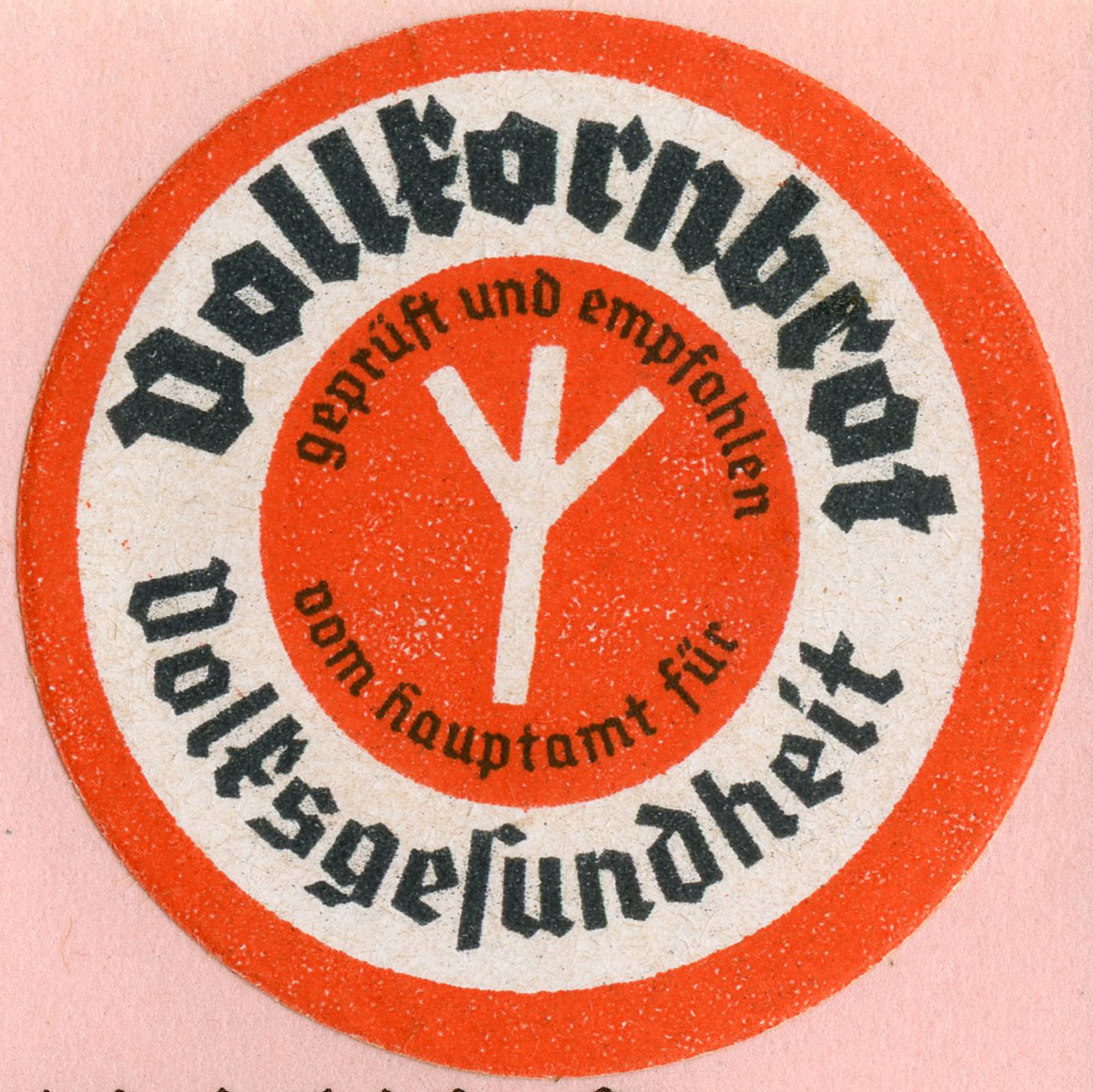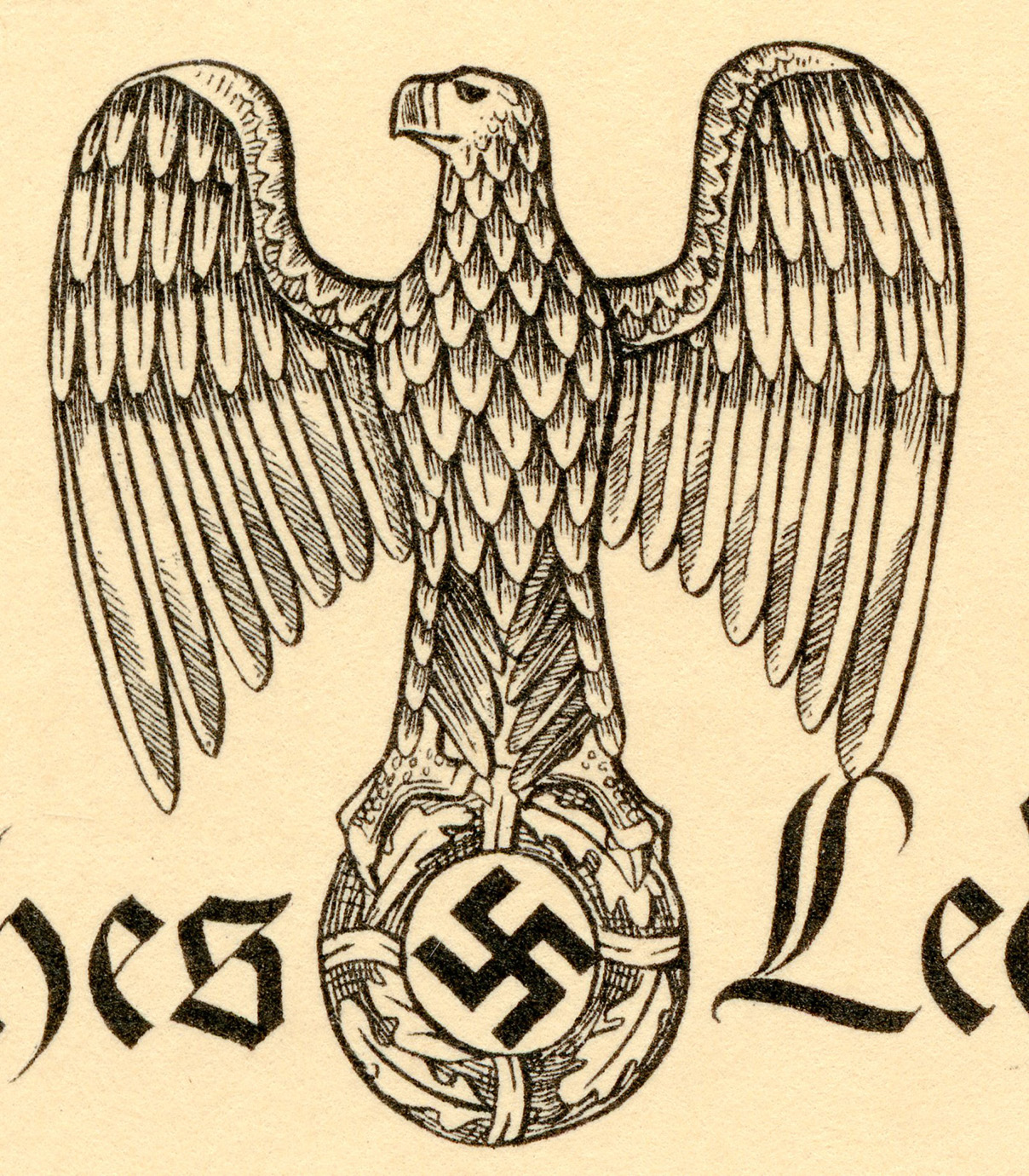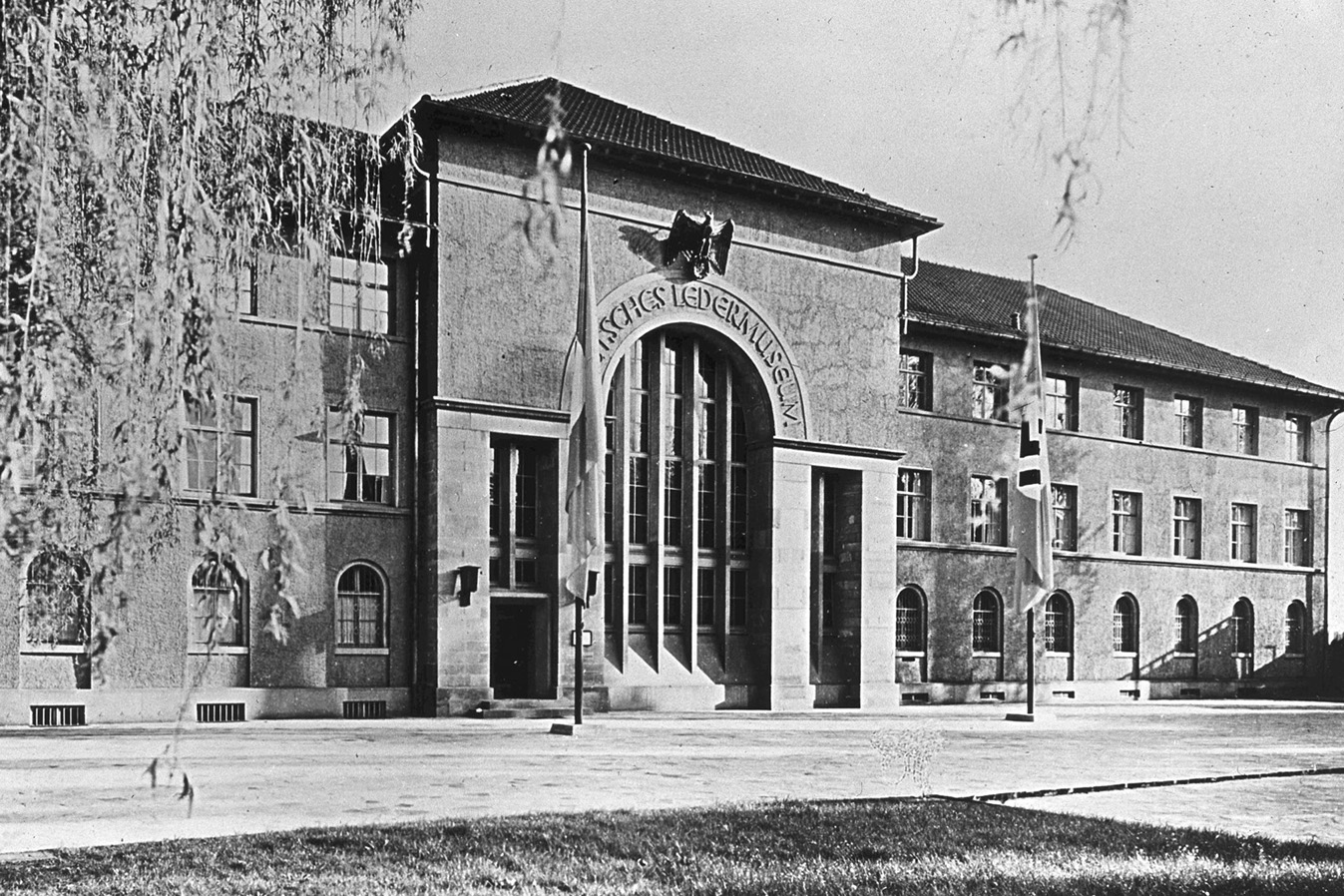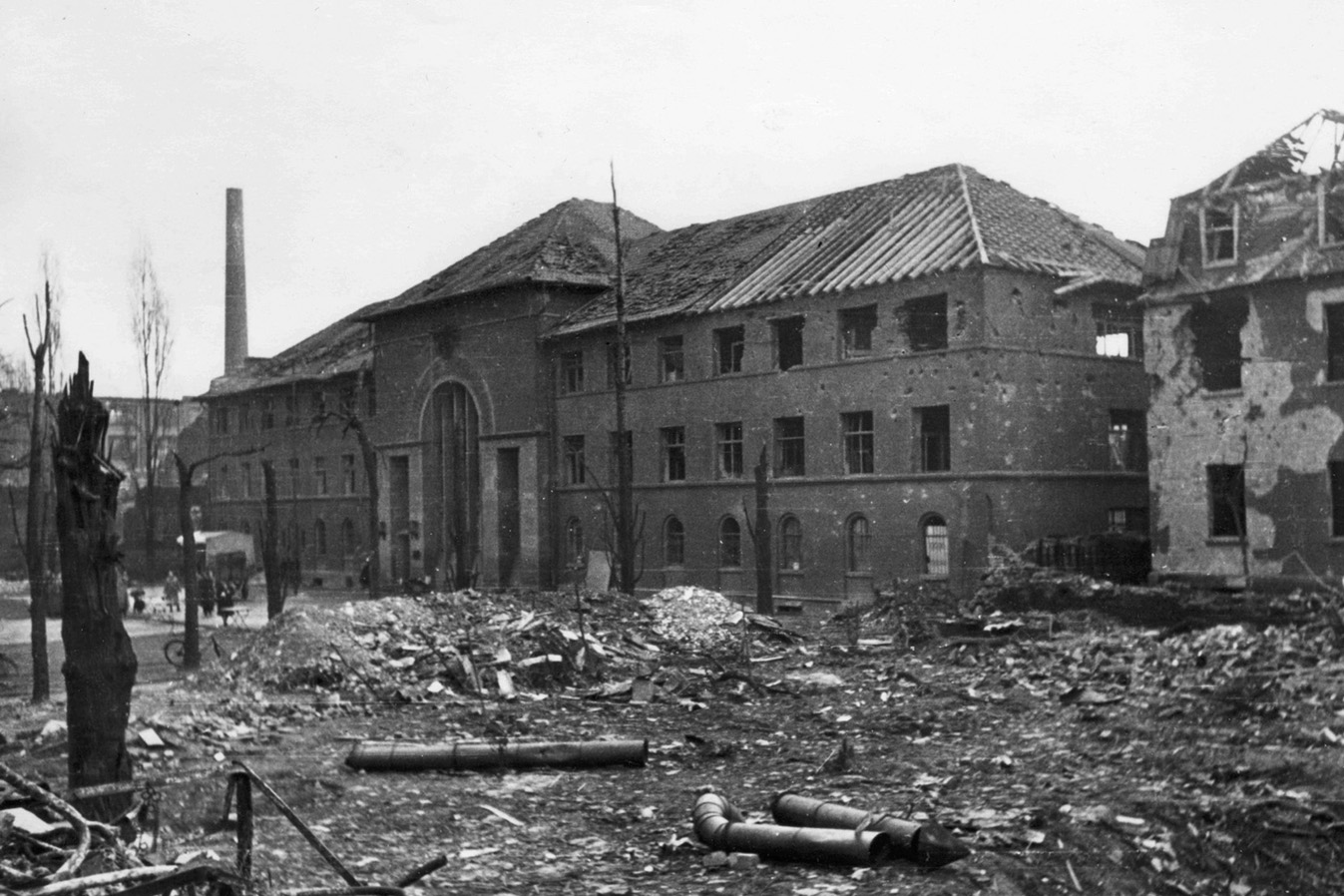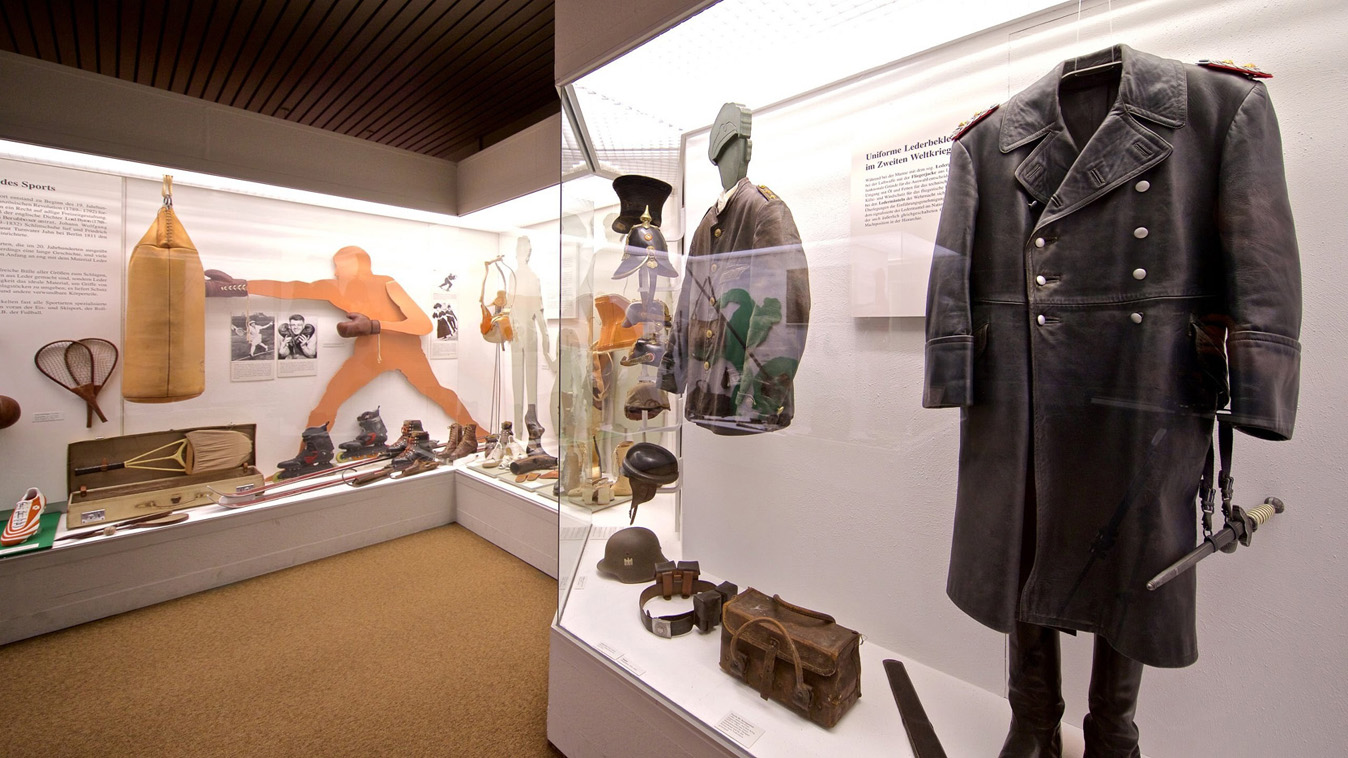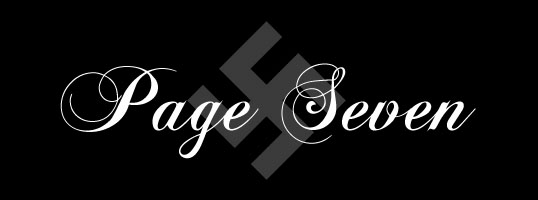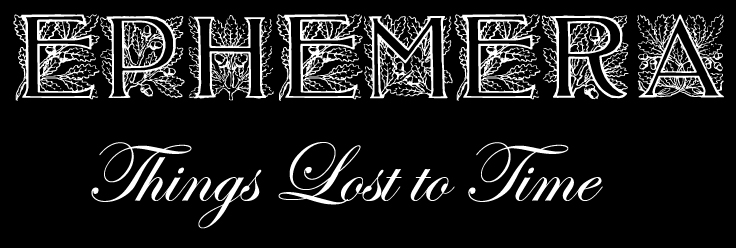

[Below: These are interesting that they survived the ravages of time and war. They are the wrappers that souvenir sheets came in. They weren't meant to be saved, and normally would have been thrown away by postal empoyees, so they are very rare. Thank god that man is a race of hoarders and pack rats! The first one is from December 3, 1938.]
[Below: Close-up.]
[Below: May 24, 1939.]
[Below: Close-up.]
[Below: December 3, 1938.]
[Below: Close-up.]
[Below: December 11, 1941.]
[Below: Close-up.]
[Below: January 18, 1944.]
[Below: Close-up.]
[Below: February 28, 1944.]
[Below: Close-up.]
[Below: June 13, 1944.]
[Below: Close-up.]
[Below: September 7, 1944.]
[Below: Close-up.]
[Below: These are the packaging of Adolf Hitler souvenir sheets. The first of this type of wrapper says:
'20 Viererblocks
mit je 4 Sondermarken zu je 6 Rpf
Verkaufspreis für 1 Block 1 RM
Wert 20 Reichsmark
Mit besonderem Aufdruck'
(20 blocks of four
with 4 special stamps of 6 Rpf each
Selling price for 1 block 1 RM
Value 20 Reichsmarks
With a special print).
The second of this type of wrapper has the same text, but a different red overprint, which says: 'Ungezähnt', which means 'Imperforate'.
An imperforate stamp just means it has a straight edge instead of a perforation. See below.]
[Below: Souvenir sheet of the type inside the top wrapper above. This was released on April 5, 1937 and was done by the artist Prof. R. Klein. This issue celebrated the 48th birthday of Adolf Hitler.
This souvenir sheet can be found with a number of different special cancels, which are avidly collected.]
[Below: Souvenir sheet of the type inside the bottom wrapper above (imperforate). This was released on April 16, 1937.]
[Below: Another variation of the souvenir sheets above. This was released on June 10, 1937 for the National Stamp Exhibition.]
[Below: This was released on September 3, 1937. Note the overprints on the sides of the stamps 'Reichsparteitag Nürnberg 1937'.
This sheet also has the words '25 Rpf
einschließlich Kulturspende' (25 Rpf including cultural donation). This was issued in celebration of the 9th Reich Party Day.]
[Below: A better look at the overprint on the side of the stamps.]

[Below: This is the size of two postcards connected. It is an order form for the imperforate souvenir sheet above. The top part of this says:
'Upon completion of your order and payment, you will receive 6 Führer blockts, imperforate. - Heil Hitler! - The German Postage Stamp National Exhibition 1937.']
[Below: Individual stamps and the souvenir sheets themselves were used as postage. Below are examples with different cancels. The envelope below was sent on April 20, 1937 to Greiz, Germany. It was sent registered mail from Berchtesgaden and arrived on the same day -- now that's service!]
[Below: This person had a very shaky hand.]
[Below: Close-up of Berchtesgaden cancel.]
[Below: Reverse of envelope showing arrival stamp.]
[Below: This envelope was postmarked in Berlin on April 17, 1937 and sent to Brussels, Belgium. Nationale Ausstellung means 'National exhibition' stamp show.]
[Below: Postmark close-up. The cursive words are called 'Sütterlin' script and can be very difficult to read. Oddly, there were even typewriters whose keys typed in the Sütterlin script.]
[Below: The front of the envelope with an additional one Pfennig Hindenburg postage stamp.]
[Below: This envelope was postmarked in Stuttgart on April 20, 1937 and sent within the city. The words 'Stadt der Auslandsdeutsche' mean 'City of Germans abroad', it was given this name in 1936.]
[Below: This envelope, using the imperforate version of the sourvenir sheet, was postmarked in Munich on April 20, 1937 and sent to Innsbruck. The words 'Hauptstadt der Bewegung-Geburtstag des Führers' mean 'Capital of the Movement-The Führers' Birthday'.]
[Below: Postmark close-up.]
[Below: This envelope, using the imperforate version of the sourvenir sheet, was postmarked in Berlin on April 18, 1937 and sent to Vienna. The cancel is of the type shown earlier.]
[Below: This envelope, using the perforated (with donation print) version of the sourvenir sheet, was postmarked in Munich on September 25, 1937 and sent to Ansbach, Bavaria. The cancel commemorates Mussolini's visit to Germany. It says 'Staatsbesuch Mussolini-Hitler' (Mussolini-Hitler State Visit).]
[Below: Postmark close-up.]
[Below: Front of envelope showing it was sent registered and uses, among others, uses a stamp from the same souvenir sheet shown above.]
[Below: This envelope was postmarked with the special cancel from the April 10, 1938 Austrian Anschluss (vote to rejoin Germany). It uses a perforate block of four from the sourvenir sheet and was sent to Stuttgart.]
[Below: Postmark close-up.]
[Below: This envelope was postmarked in Munich on April 20, 1937 and sent to Amsterdam. It uses the original perforated sourvenir sheet plus an additional one Pfennig Hindenberg stamp.]
[Below: Front of envelope showing many more stamps, way beyond what an international letter cost (for stamp collecting).]
[Below: Envelope using half a sheet of the overprinted variety, postmarked in November 1937.]
[Below: Postcard using overprinted stamps from the souvenir sheet above and postmarked with a special Reich Party Day cancel on September 3, 1937.]
[Below: Postcard reverse.]
[Below: Stamp close-up.]
[Below: Here is a very rare and interesting prototype of the stamp design seen above. It is printed on cardboard and has some very different design elements. You'll also note the denomination is much higher (25 instead of 6).]
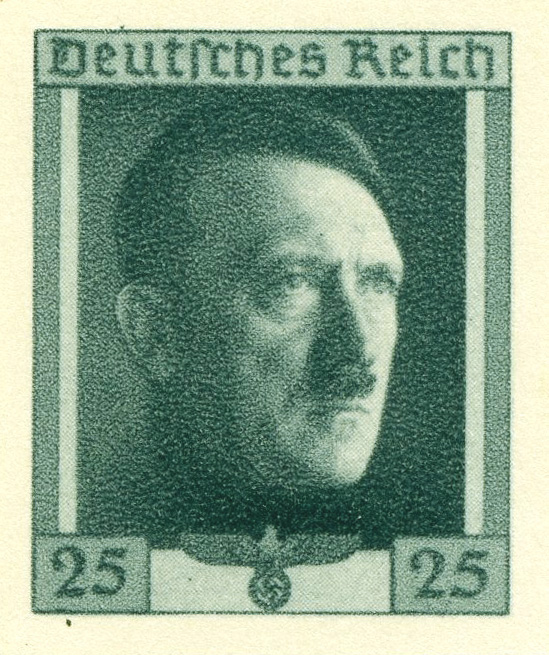

[Below: Here is a document from a National Socialist newspaper called 'Stuttgarter NS-Kurier'. This is dated January 24, 1941, and begins to say:
'In Zeiten weltgeschichtlicher Entscheidungen,
wie wir sie heute erleben, weiss man die Bedeutung der nationalsozialistischen Tagespresse erst recht zu würdigen.
In unserem Gau hat sich der Stuttgarter NS-Kurier durch seine vielseitigen Leistungen einen hervorragenden Platz unter den Schwäbischen Tageszeitungen erworben.'
(In times of world-historical decisions,
As we experience it today, we can truly appreciate the importance of the National Socialist daily press.
In our region, the Stuttgarter NS-Kurier has earned an excellent place among the Swabian daily newspapers thanks to its diverse services.)]
[Below: Eagle close-up.]

[Below: A petroleum ration coupon for 1/4 Liter. On the left it says:
'Reichsstelle für Mineralöl
Zur Einlösung dieses Scheines sind nur Petroleumhändler berechtigt, die im Besitz einer Veräußerungsgenehmigung für den Einzel-bzw. Großhandel sind.'
(Reich office for mineral oil
Only petroleum dealers who are in possession of a sales license for retail or wholesale trade are entitled to redeem this certificate.)
On the right it says:
'Berechligungsschein für Petroleum
An den rechtmäßigen Empfangsberechtigten darf/dürfen gegen diesen Schein einmalig'
(Authorization certificate for petroleum
The rightful recipient may only be issued with this certificate once.)
Circa 1943.]
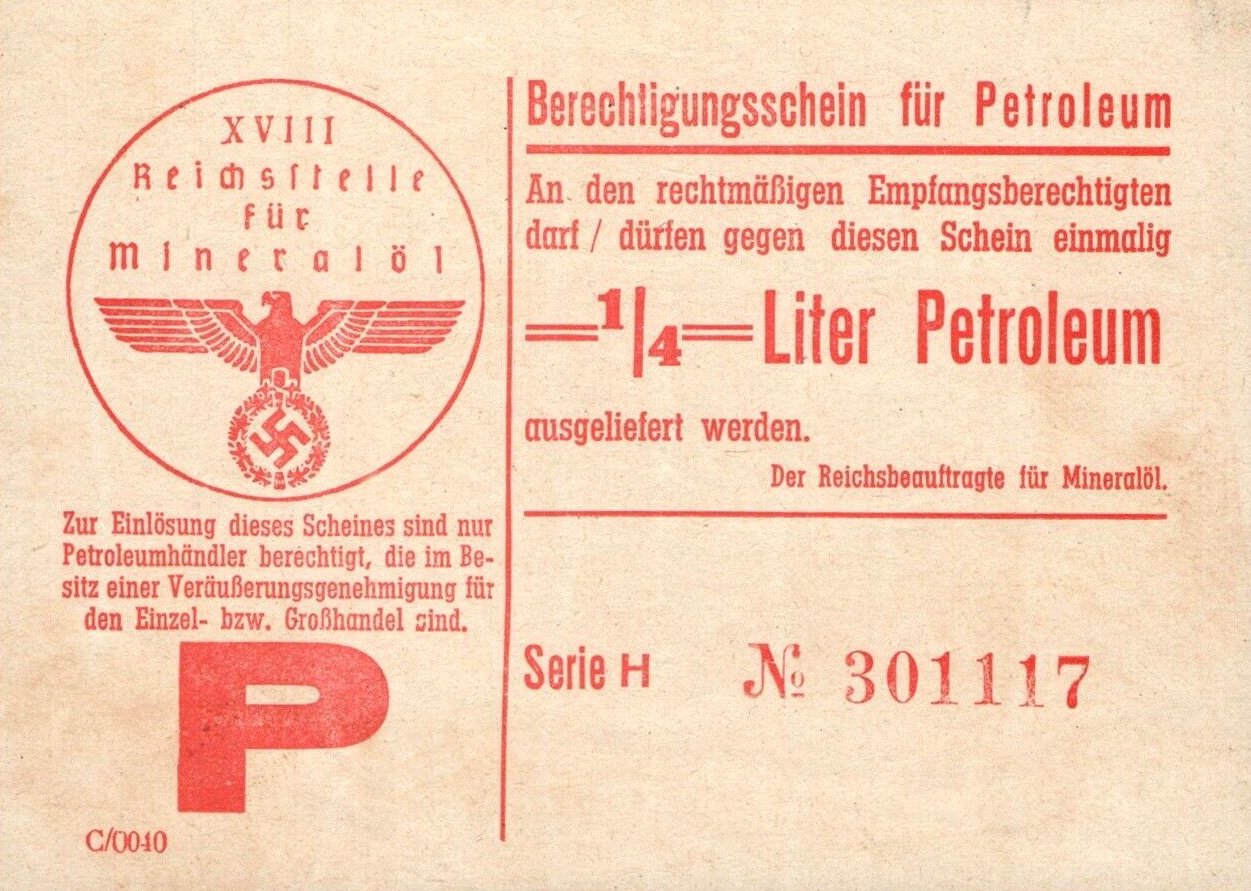

[Below: Here is a document dealing with an application for employment for the position of hotel manager. This is dated January 21, 1939, and says:
'Betrifft: Hotel -Bewerbungen-
Ihre Bewerbung vom 2.1.39 ging uns durch Herrn Direktor Herrmann, der inzwischen die Leitung des Hotels "Haus Oberschlesien" in Gleiwitz übernommen hat, zu. Wir haben Interesse für Ihre Bewerbung und bitten um Angabe Ihrer Gehaltsforderung.'
(Betrifft: Subject: Hotel applications
Your application dated January 2, 1939 was sent to us by Director Herrmann, who has now taken over the management of the “Haus Oberschlesien” hotel in Gleiwitz. We are interested in your application and ask you to state your salary requirements.)]
[Below: Eagle close-up.]

[Below: Here is a document from the WHW (Winterhilfswerk des Deutschen Volkes, or Winter Relief of the German People). I've never seen a WHW document with this sticker, which utilizes the Algiz rune (life rune). The sticker says:
'Vollkornbrot
geprüft und empfahlen
vom hauptamt für
Volksgesundheit.'
(Whole grain bread
checked and recommended
from the main office for
Public Health.)
The document says:
'Auftrag und Rechnung
In Namen des Winterhilfswerkes des Deiutschen Volkes, Berlin, werden geliefert:
2000 Stück Rohware Nr. 8 - Bäuerin - '
(Order and invoice
On behalf of the Winter Relief Organization of the German People, Berlin, the following are delivered:
2000 pieces of raw material No. 8 - farmer's wife-).
This is an order for 2000 small figures sold to help the WHW. Many such small trickets were sold by the WHW and collecting them became a bit of a craze.]
[Below: Algiz rune close-up.]

[Below: Wow, this is neat, but has perhaps one of the strangest eagles ever. It kind of looks like a cross between an eagle and a dog! It says:
'Deutsches Ledermuseum, Offenbach a. M.'
(German Leather Museum, Offenbach a. M.)]
Offenbach a.M. stands for Offenbach on the Main (river). This leather museum (founded in 1917) is still in operation and is one of the largest leather museums in the world. It showcases some items believed to be more than 3,000 years old, not to mention items from the 3rd Reich.
[Below: Eagle close-up.]
[Below: The German Leather Museum during the Third Reich.]
[Below: The German Leather Museum in 1945 after Allied bombs. I guess they didn't like the lampshade exhibit.]
[Below: A display within.]
[Below: Note the Third Reich display.]
